Imagine stepping onto your balcony or into your small yard and snipping fresh, fragrant herbs just moments before dinner. This dream is entirely achievable, even if your gardening experience is minimal or your space is limited. Growing your own herbs means you enjoy unparalleled freshness, save money, and elevate your cooking with vibrant flavors. Many herbs thrive in containers, require little fuss, and grow incredibly quickly, offering continuous harvests.
This guide empowers you to cultivate a thriving herb garden, no matter how small your space. We focus on the best fast-growing herbs, providing practical steps and actionable advice to ensure your success. You will learn about selecting the right containers, preparing the ideal soil, and mastering the simple rhythms of watering and harvesting. Get ready to transform your kitchen and outdoor space with your very own fresh, delicious herbs.

Small-Space Planning for Herb Success
Successful small-space gardening begins with smart planning. Before you sow a single seed, assess your environment. You need to understand the sunlight patterns, consider air circulation, and ensure easy access for daily care. These foundational steps ensure your fast-growing herbs flourish, providing you with abundant harvests.
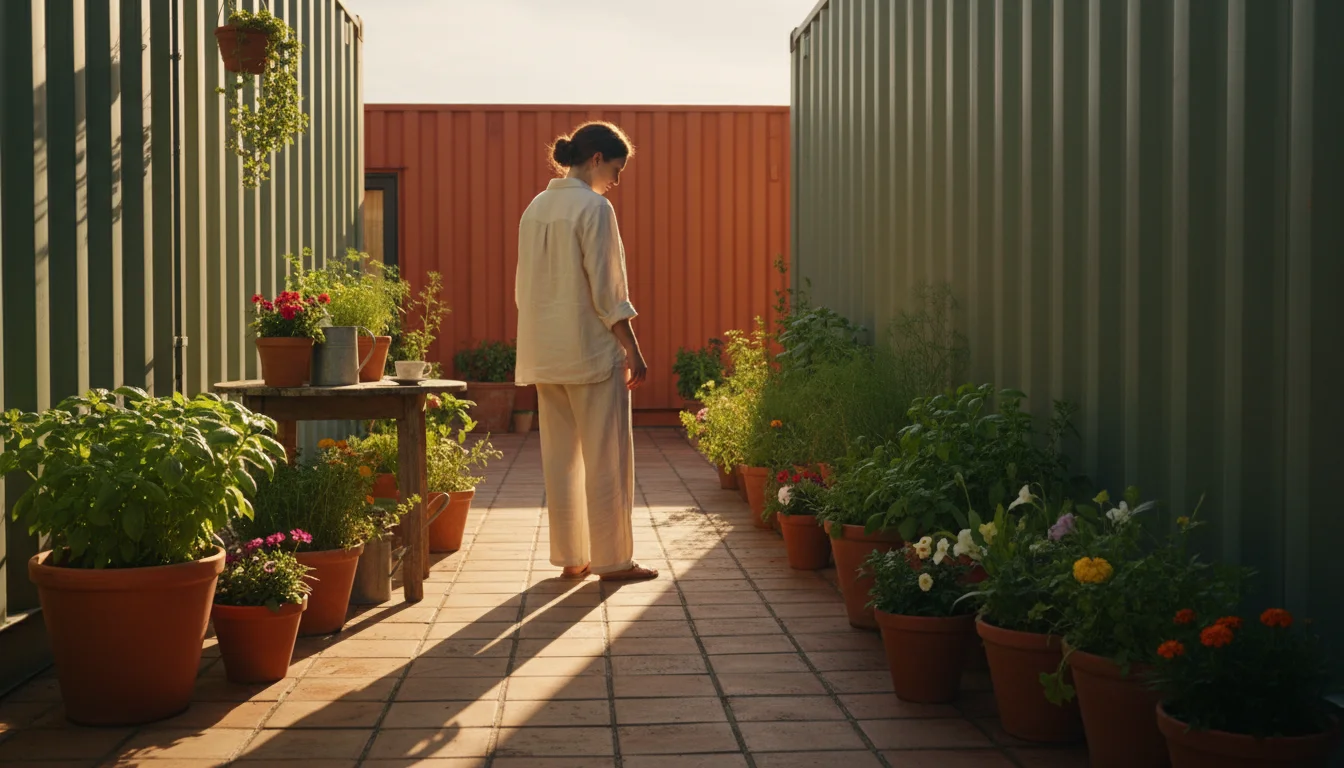
Mapping Your Sunlight
Most fast-growing herbs, especially the popular kitchen herbs like basil, cilantro, and dill, require at least six hours of direct sunlight daily to thrive. This means measuring the sunlight your chosen spot receives. Observe your balcony, patio, or windowsill throughout the day. Mark down which areas receive full sun, partial sun (3-6 hours), or shade (less than 3 hours). Place sun-loving herbs in the brightest spots, and consider rotating containers to maximize light exposure if necessary. Remember, insufficient light leads to leggy, weak plants with less flavor, making your effort less rewarding.
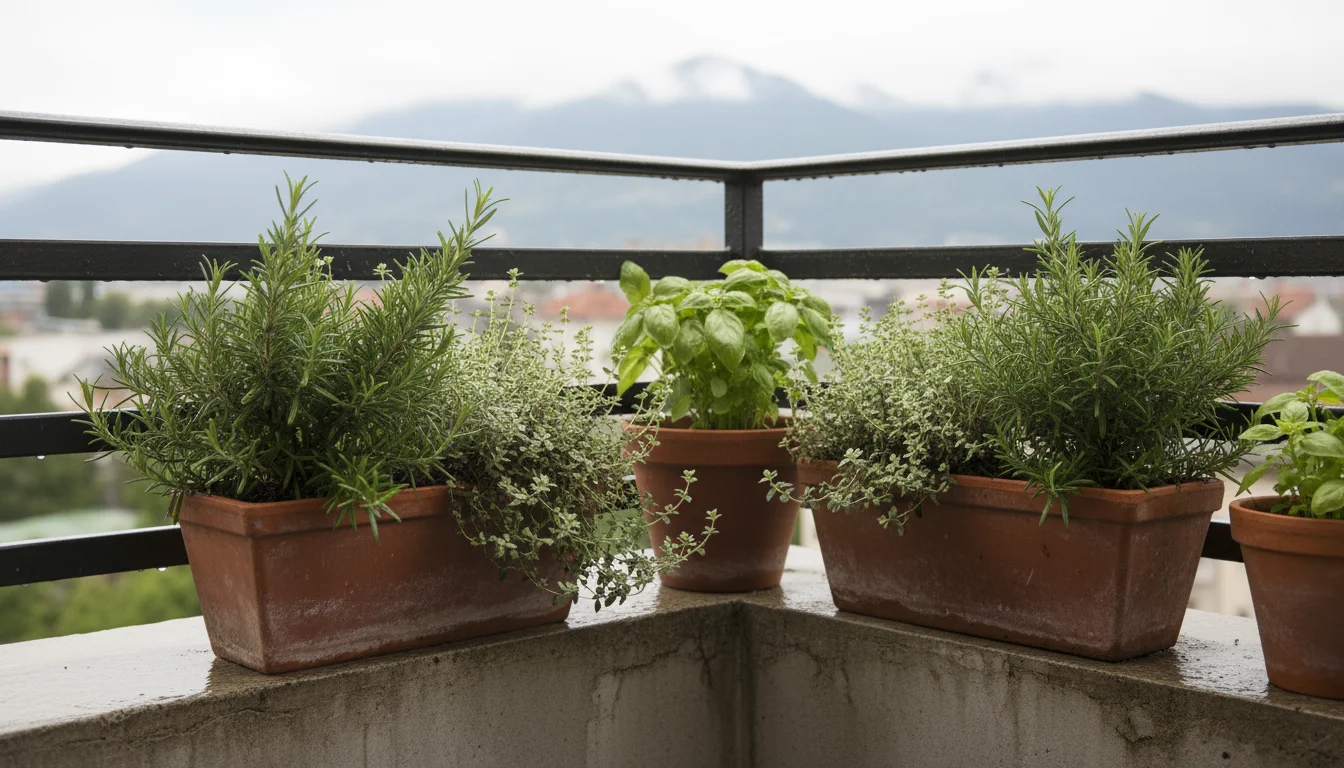
Considering Wind and Exposure
Wind can be a significant challenge for container gardens, especially on balconies or exposed patios. Strong winds can dehydrate plants quickly, damage delicate foliage, and even knock over containers. If your space is particularly windy, consider placing containers in a sheltered corner, against a wall, or near a railing that offers some protection. You can also group containers together to create a microclimate, where plants shield each other. Choose heavier pots or add weights to prevent tipping. Adequate air circulation is important to prevent fungal diseases, but extreme wind is detrimental.
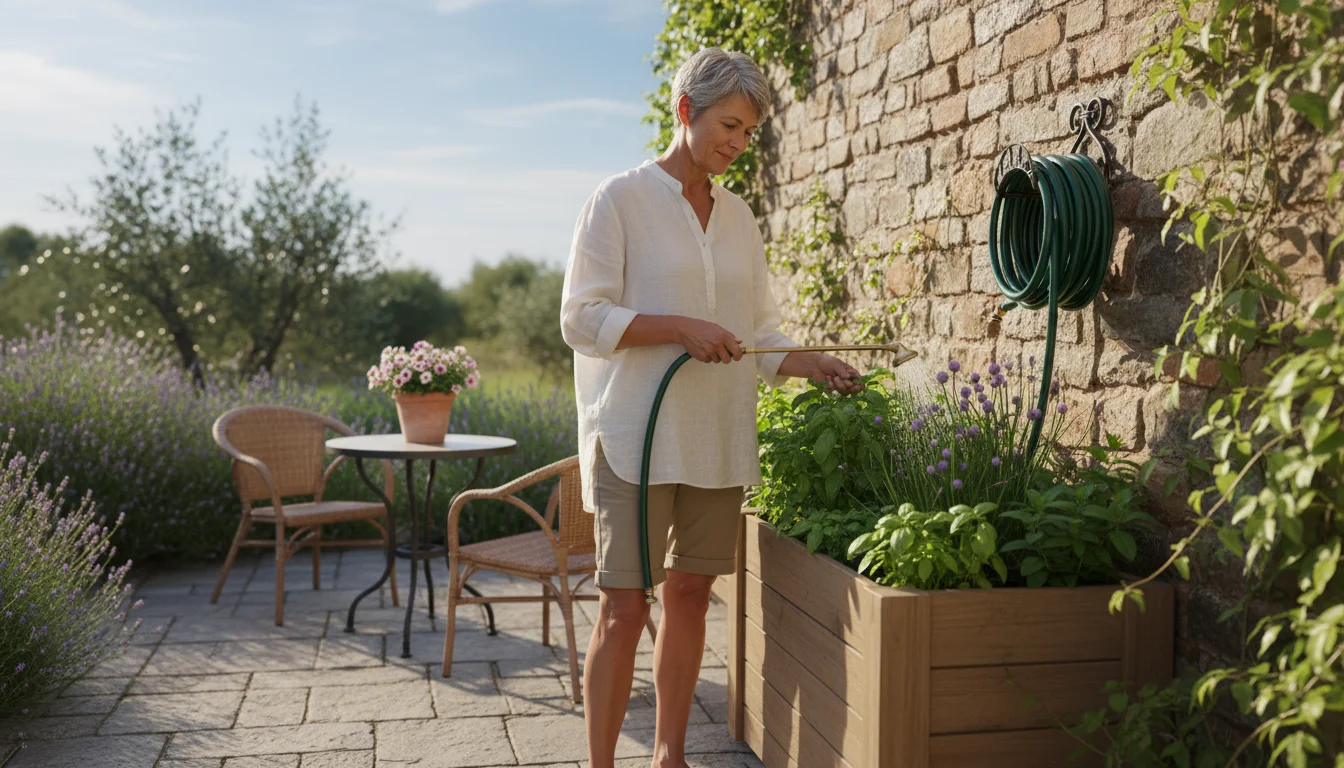
Accessibility and Water Source
Easy access to your herbs makes daily care a pleasure, not a chore. Place your containers where you can easily reach them for watering, harvesting, and pest checks. If you have limited mobility, raised planters or vertical garden systems can bring your herbs to a comfortable height. Also, consider your water source. Hauling a heavy watering can across a large space becomes tiresome. Position your herb garden near a tap or make sure your watering system is convenient. Efficient watering is a cornerstone of low-maintenance gardening.
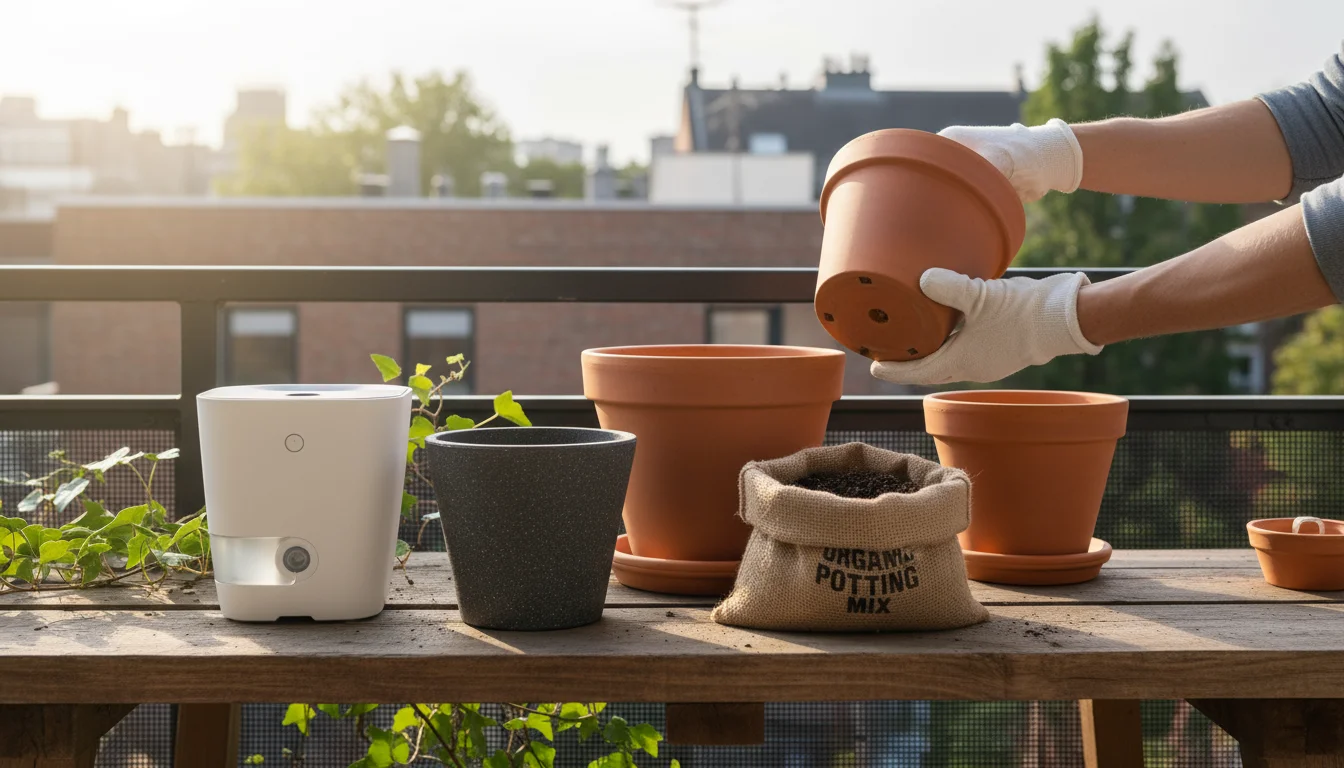
Choosing the Right Containers for Your Herbs
The container you select directly impacts your herb’s health and growth. For fast-growing herbs, choose pots that accommodate their root systems and support vigorous growth. You want durability, proper drainage, and often, portability. You have many excellent options, from traditional terracotta to modern self-watering designs.
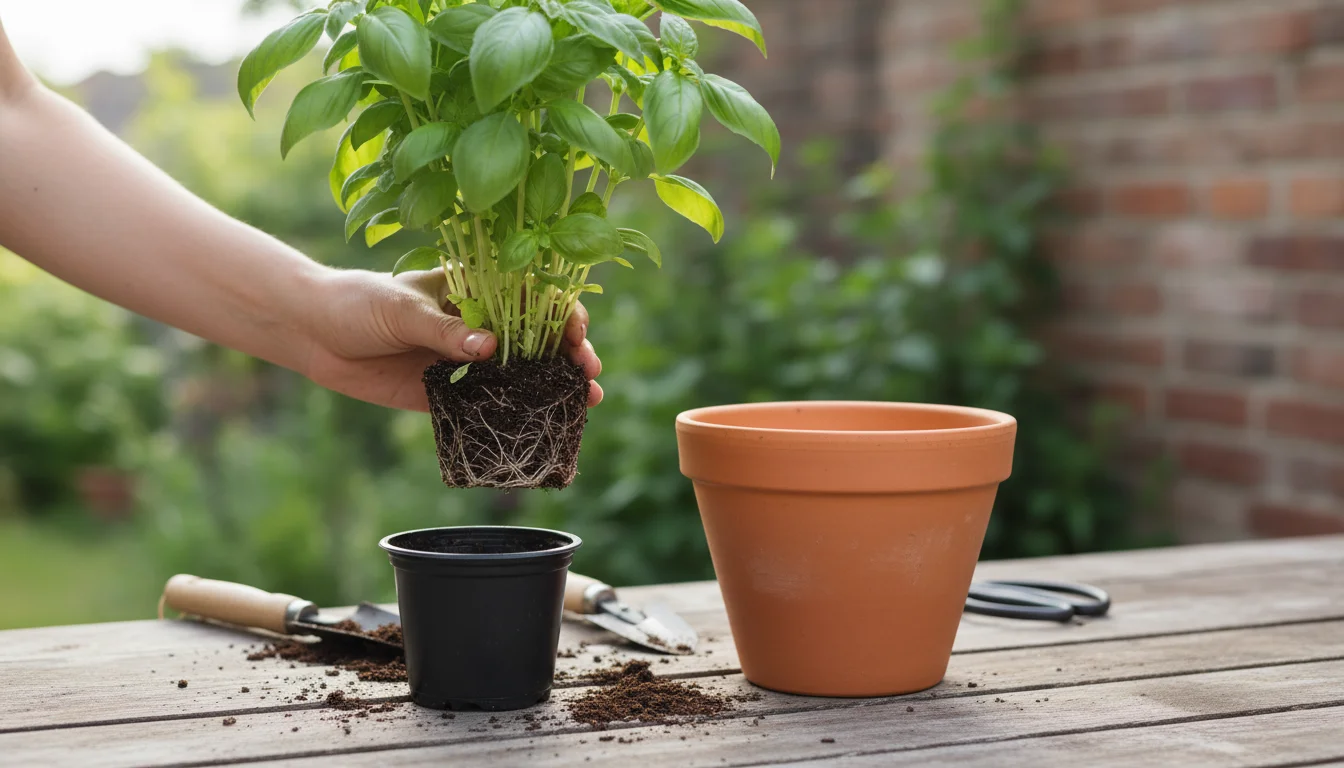
Size Matters for Root Development
While many herbs start small, they grow quickly and establish robust root systems. A pot that is too small restricts root growth, leading to stunted plants and frequent watering. Aim for containers that are at least 6-8 inches in diameter for individual herb plants like basil or mint. For grouping several herbs, a planter box 12-18 inches long and 8-10 inches deep works well. Deeper pots (10-12 inches) are preferable for herbs with extensive root systems or for supporting larger plants. Adequate space translates directly to healthier, more productive kitchen herbs.
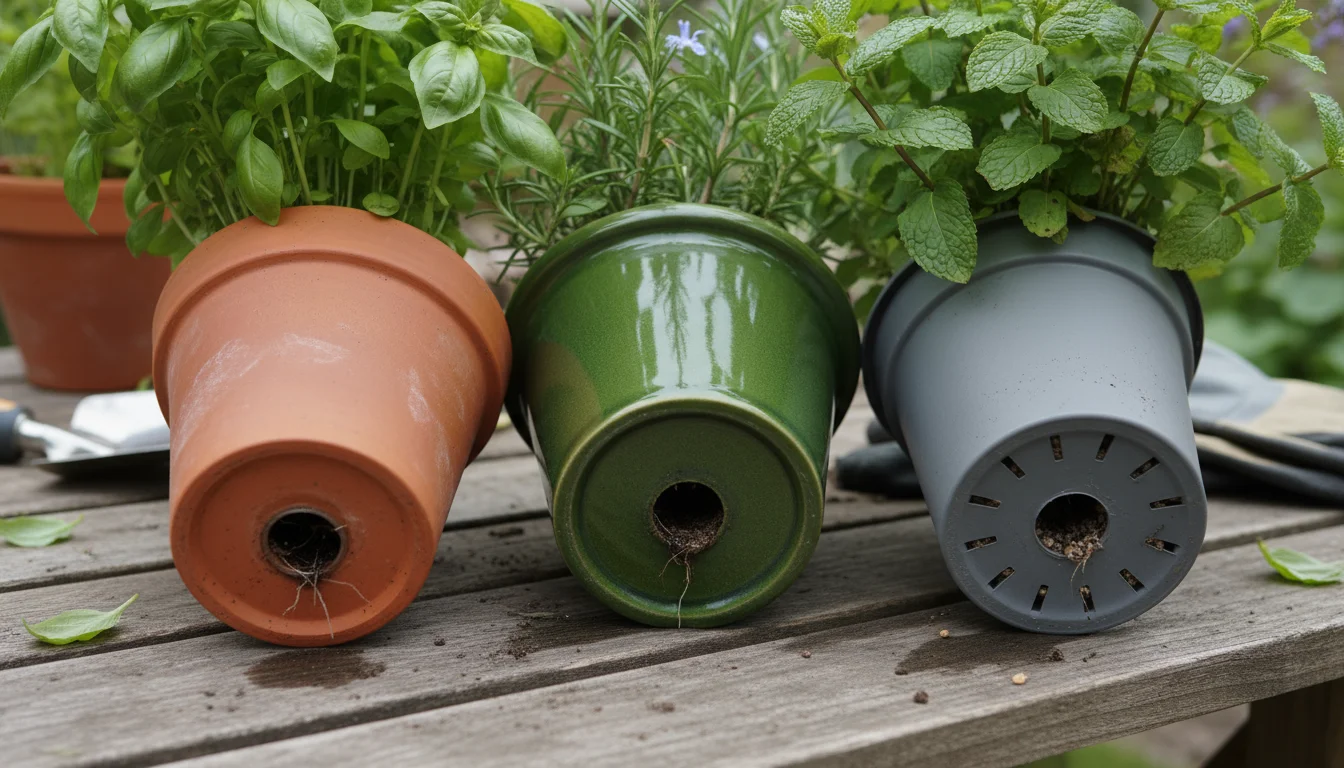
Materials and Drainage
Container materials influence moisture retention and temperature. Terracotta pots, for example, are porous and allow soil to dry out faster, which is beneficial for herbs that prefer drier conditions, but they require more frequent watering. Plastic or glazed ceramic pots retain moisture longer, reducing watering frequency, making them a good choice for busy gardeners. Whatever material you choose, ensure every container has drainage holes. Without proper drainage, roots sit in waterlogged soil, leading to root rot and plant death. You can add a layer of gravel or broken pottery at the bottom, but the primary function is to prevent soil from washing out, not to enhance drainage itself; the drainage hole is paramount. Saucers are useful to catch excess water but remember to empty them to prevent standing water.
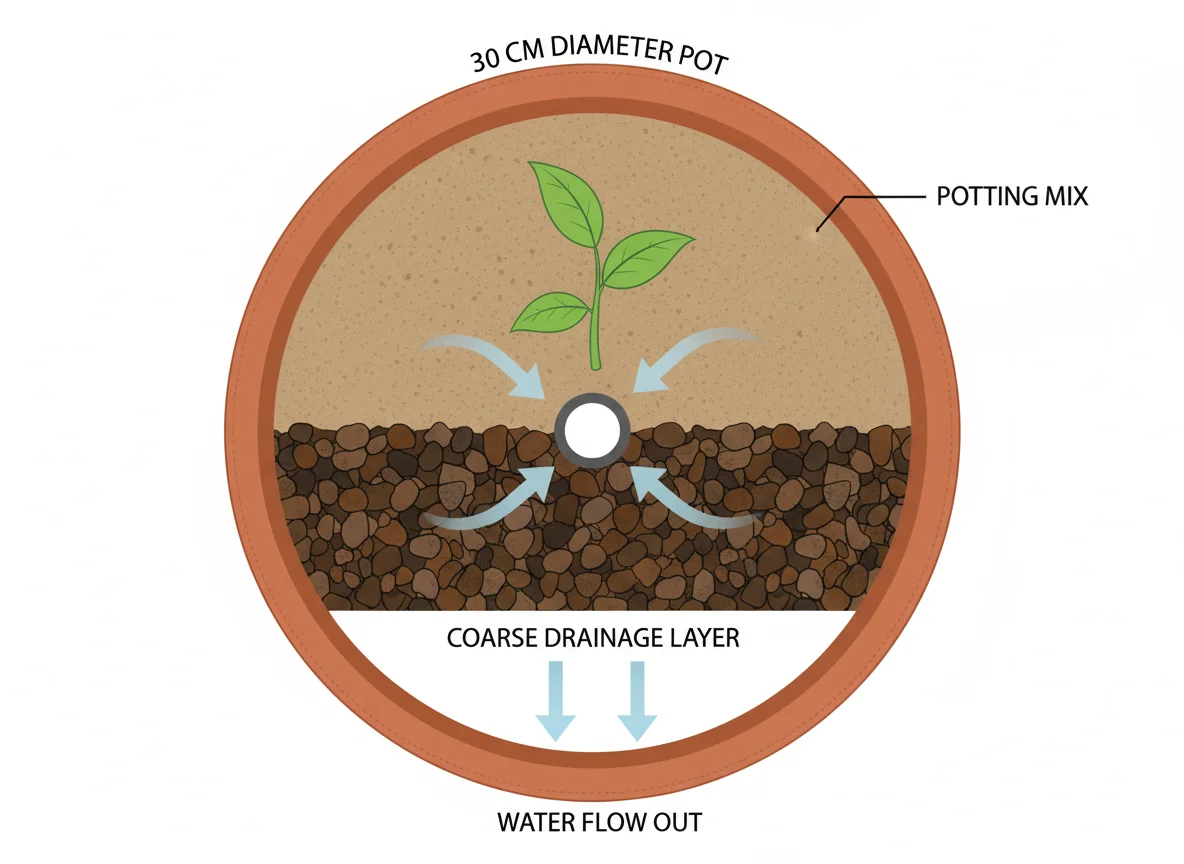
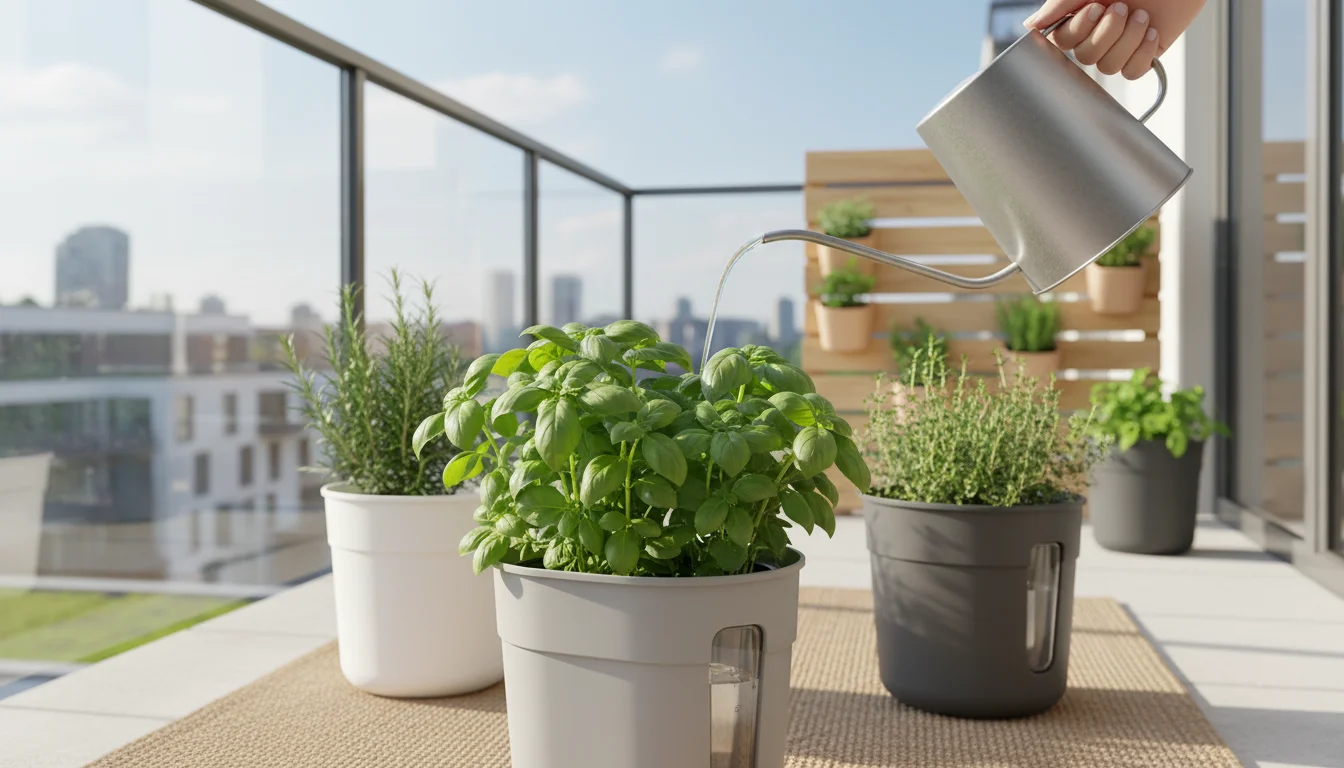
Self-Watering Options for Busy Gardeners
Self-watering containers offer an excellent solution for low-maintenance herb gardening. These pots feature a reservoir at the bottom that wicks water up into the soil as needed. This system ensures consistent moisture, reduces watering frequency, and helps prevent both overwatering and underwatering. They are particularly beneficial for thirsty herbs like basil, or if you travel frequently. You fill the reservoir, and the plant draws water as it requires, often for several days or even a week. This innovative approach simplifies care and keeps your fast-growing herbs hydrated and thriving.
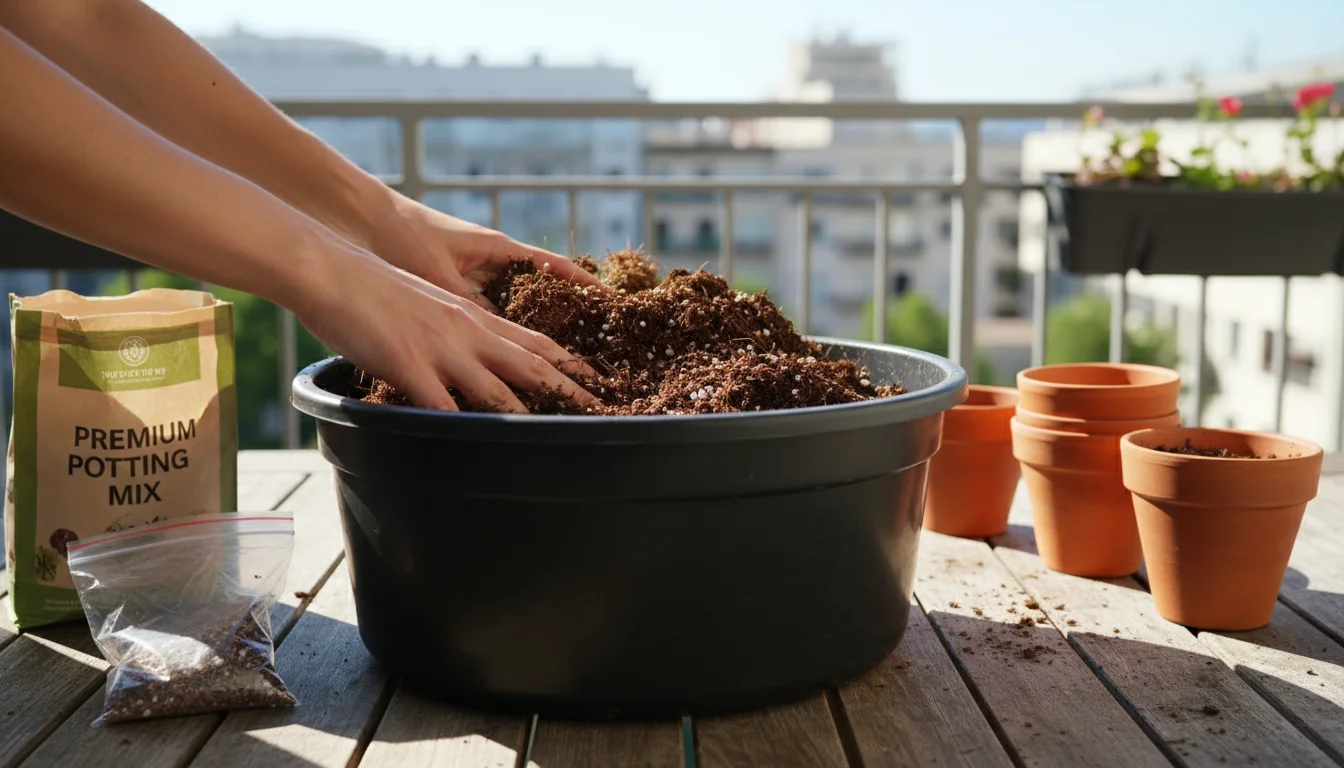
Crafting the Perfect Potting Mix for Thriving Herbs
The foundation of a successful container herb garden is the potting mix. It provides physical support, retains moisture, and supplies essential nutrients to your fast-growing herbs. Do not use garden soil directly in containers, as it compacts easily and lacks adequate drainage and aeration. A high-quality, well-draining potting mix is crucial for healthy root development and robust plant growth.
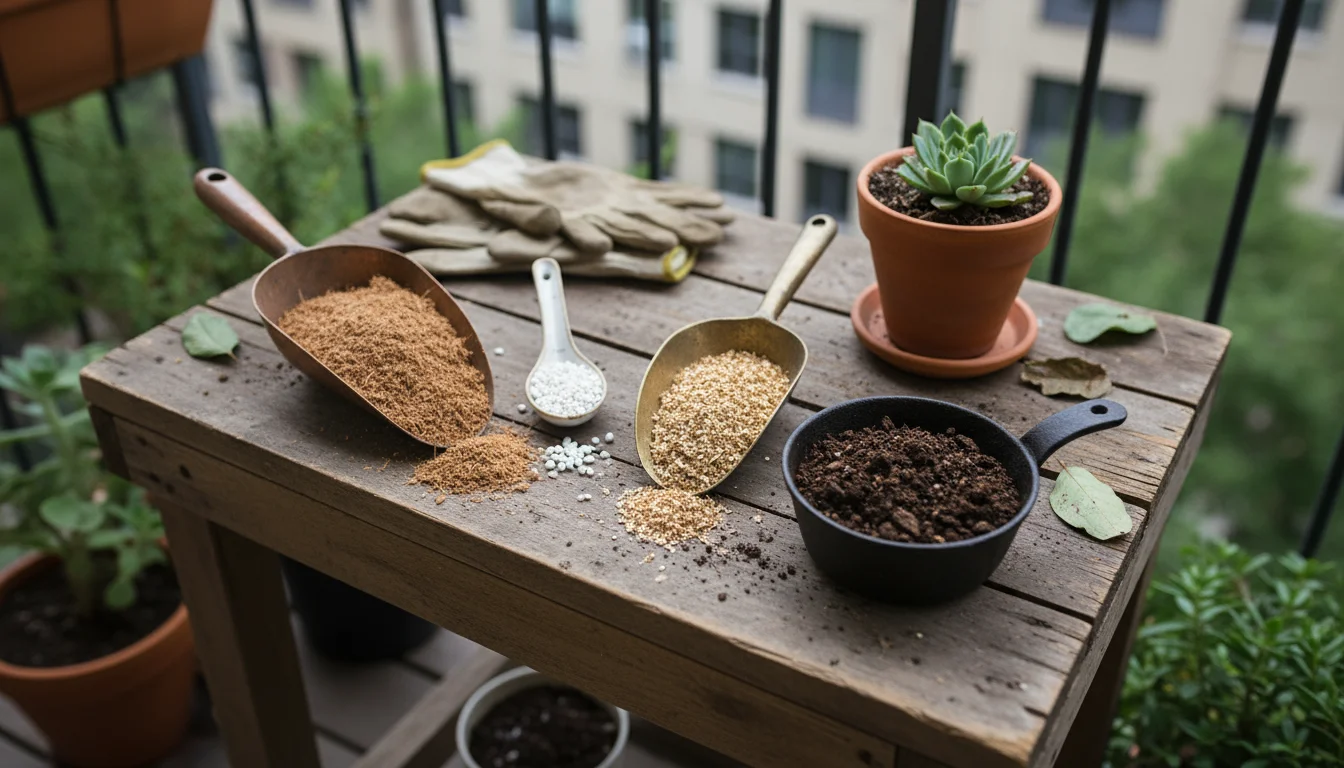
Key Ingredients for Success
A good potting mix for herbs typically contains a blend of components that serve different functions:
- Peat Moss or Coco Coir: These materials retain moisture and nutrients while providing structure. Coco coir, derived from coconut husks, is a sustainable alternative to peat moss, which is harvested from sensitive bog ecosystems. Coco coir holds water efficiently and provides excellent aeration.
- Perlite or Vermiculite: These lightweight minerals improve drainage and aeration, preventing soil compaction and ensuring roots receive adequate oxygen. Perlite offers more drainage, while vermiculite retains more moisture and nutrients. A combination often works best.
- Compost or Worm Castings: Organic matter is vital for nutrient supply. Compost enriches the soil with a slow-release source of nutrients, promotes beneficial microbial activity, and improves soil structure. Worm castings are particularly rich in readily available plant nutrients.
- Coarse Sand (Optional): For herbs that prefer very sharp drainage, such as rosemary or thyme, a small amount of coarse horticultural sand can further improve drainage, though perlite often suffices.
Look for potting mixes labeled “container mix” or “potting mix for edibles.” These are typically formulated to provide the right balance for healthy plant growth.
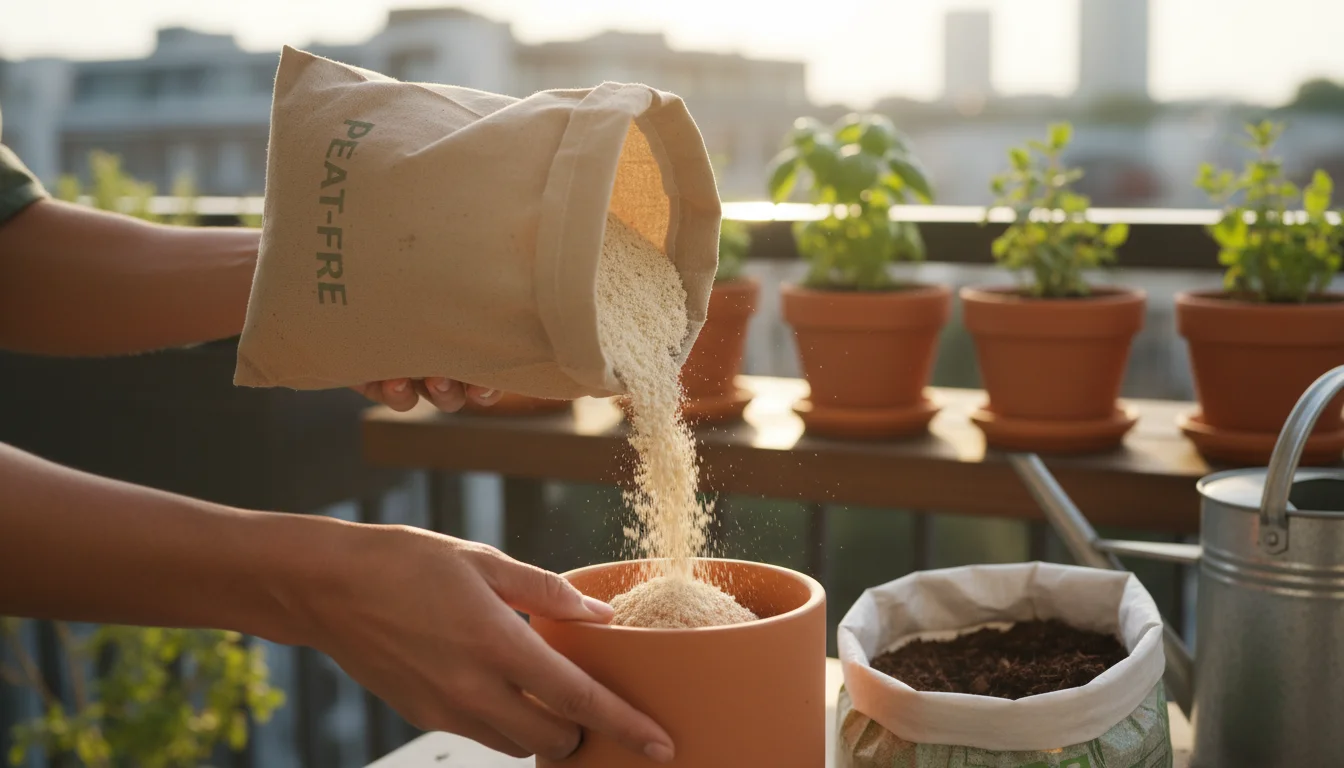
Why Peat-Free Matters
When selecting your potting mix, actively choose peat-free options. Peat moss is harvested from peat bogs, which are unique and important wetlands that store vast amounts of carbon and provide critical habitats. Peat harvesting releases carbon dioxide into the atmosphere, contributing to climate change, and destroys these valuable ecosystems. Sustainable alternatives like coco coir, composted bark, and wood fiber perform just as well, if not better, for container gardening. By choosing peat-free, you make an environmentally conscious decision that supports healthy ecosystems while still providing excellent growing conditions for your fast-growing herbs.
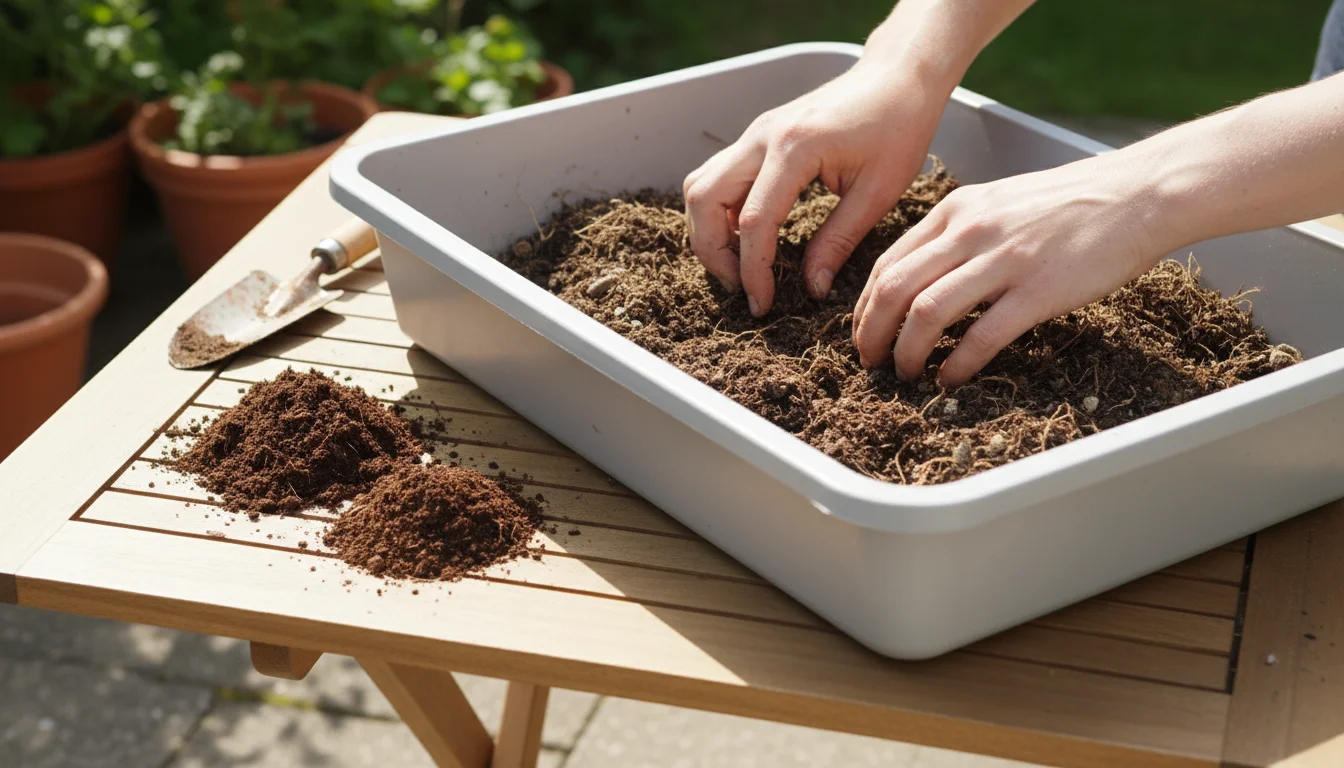
Reusing and Refreshing Potting Mix
You can often reuse potting mix for another season, which saves money and resources. However, fresh nutrients are essential. After a growing season, the potting mix typically depletes its nutrient reserves and may show some compaction. To refresh it, remove any old roots and debris. Then, incorporate fresh compost or worm castings, a handful of perlite or vermiculite to improve aeration, and a slow-release organic fertilizer. This rejuvenates the mix, making it suitable for new plantings of your kitchen herbs. This practice aligns with sustainable gardening principles, reducing waste and maximizing resource use.
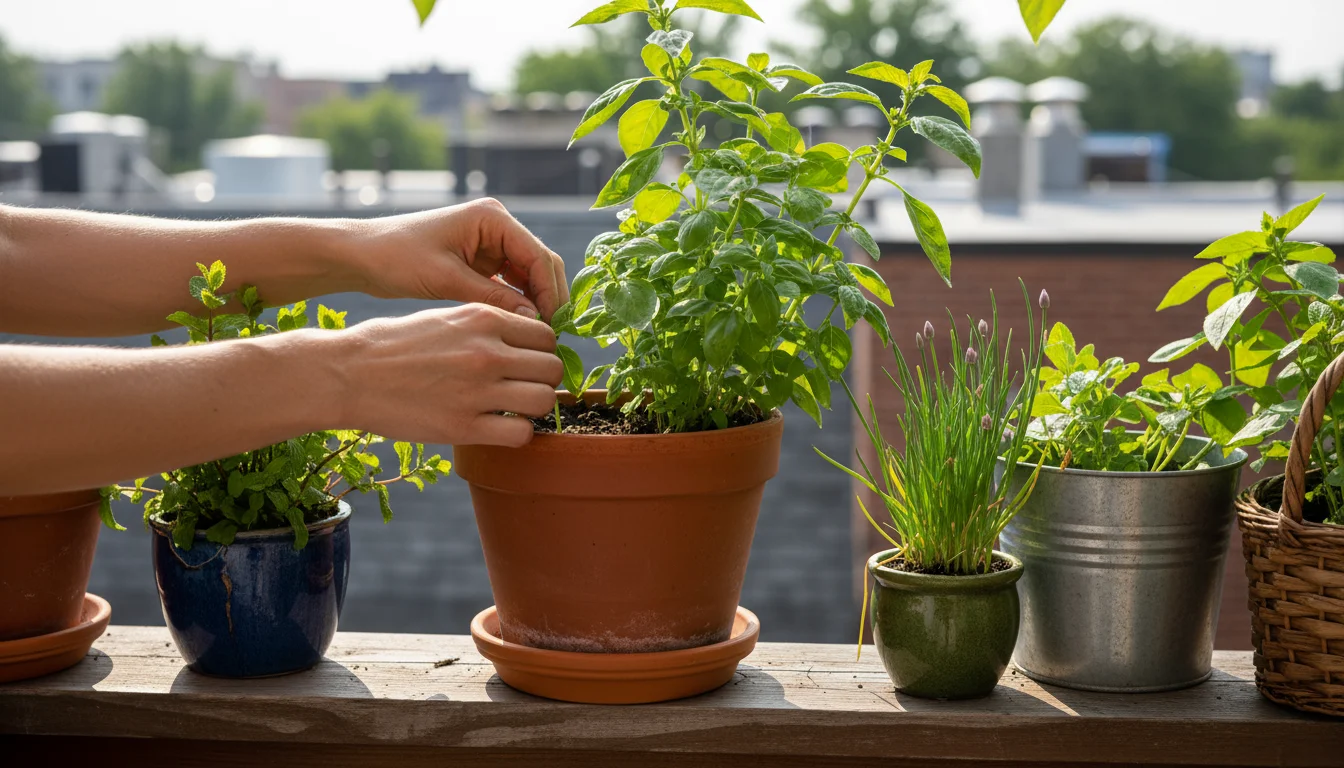
The Best Fast-Growing Herbs You’ll Use Every Day
Selecting the right herbs is the first step toward a productive garden. For small spaces and daily culinary use, you want herbs that establish quickly, offer continuous harvests, and adapt well to containers. Here are some of the best fast-growing herbs you can easily cultivate:
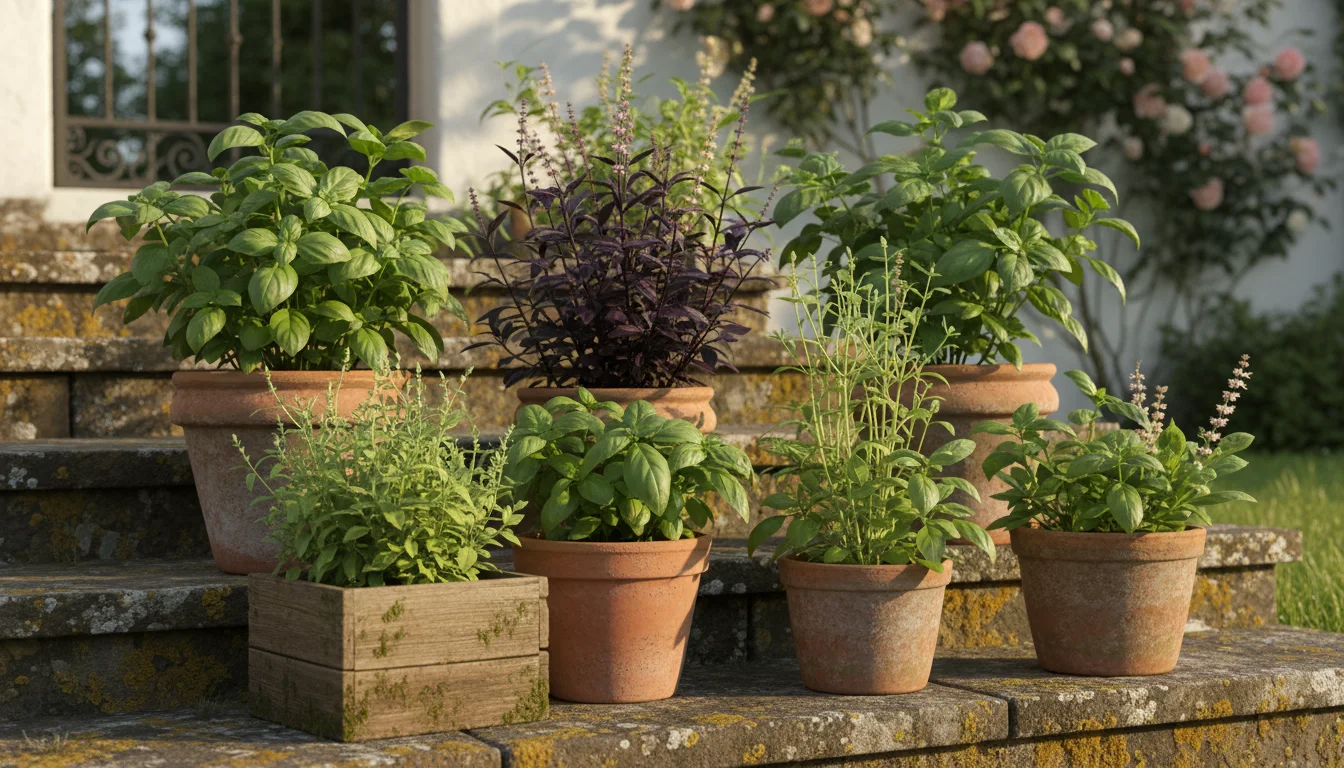
Basil (Ocimum basilicum)
Basil is the quintessential summer herb, essential for pesto, Caprese salads, and countless Italian and Asian dishes. It is incredibly fast-growing from seed, often ready for its first harvest in 3-4 weeks. Basil thrives in full sun and consistently moist, well-drained soil. Pinching back the growing tips regularly encourages bushier growth and prevents it from flowering too early, extending your harvest. There are many varieties, including ‘Genovese’ for classic pesto, ‘Thai’ for a hint of anise, and ‘Lemon’ for a citrusy twist.
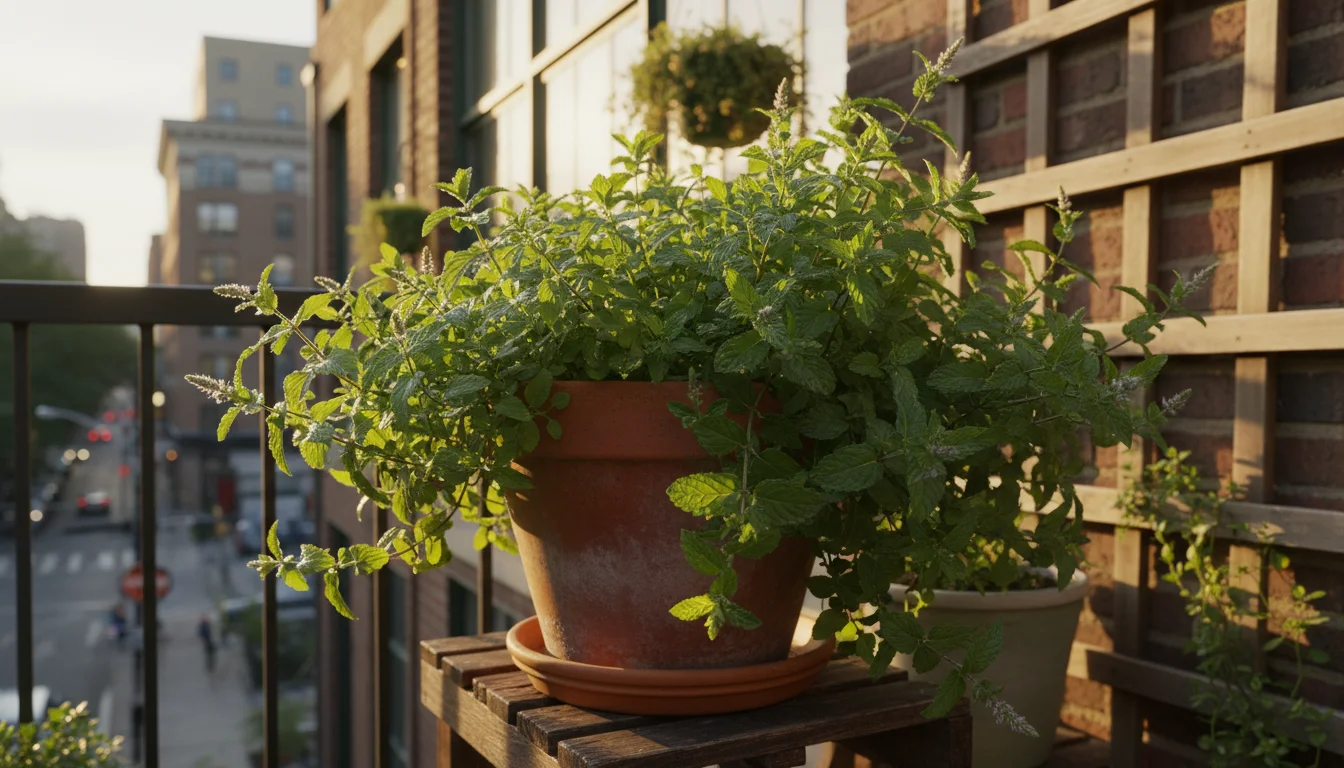
Mint (Mentha spp.)
Mint is notoriously vigorous and exceptionally fast-growing. Its refreshing flavor elevates teas, desserts, and cocktails. Because mint spreads aggressively through underground runners, growing it in a container is almost mandatory to prevent it from taking over your garden. Mint tolerates partial shade but prefers full sun and consistently moist soil. Popular varieties include ‘Spearmint,’ ‘Peppermint,’ and ‘Chocolate Mint.’ Harvest frequently to keep it productive and flavorful.
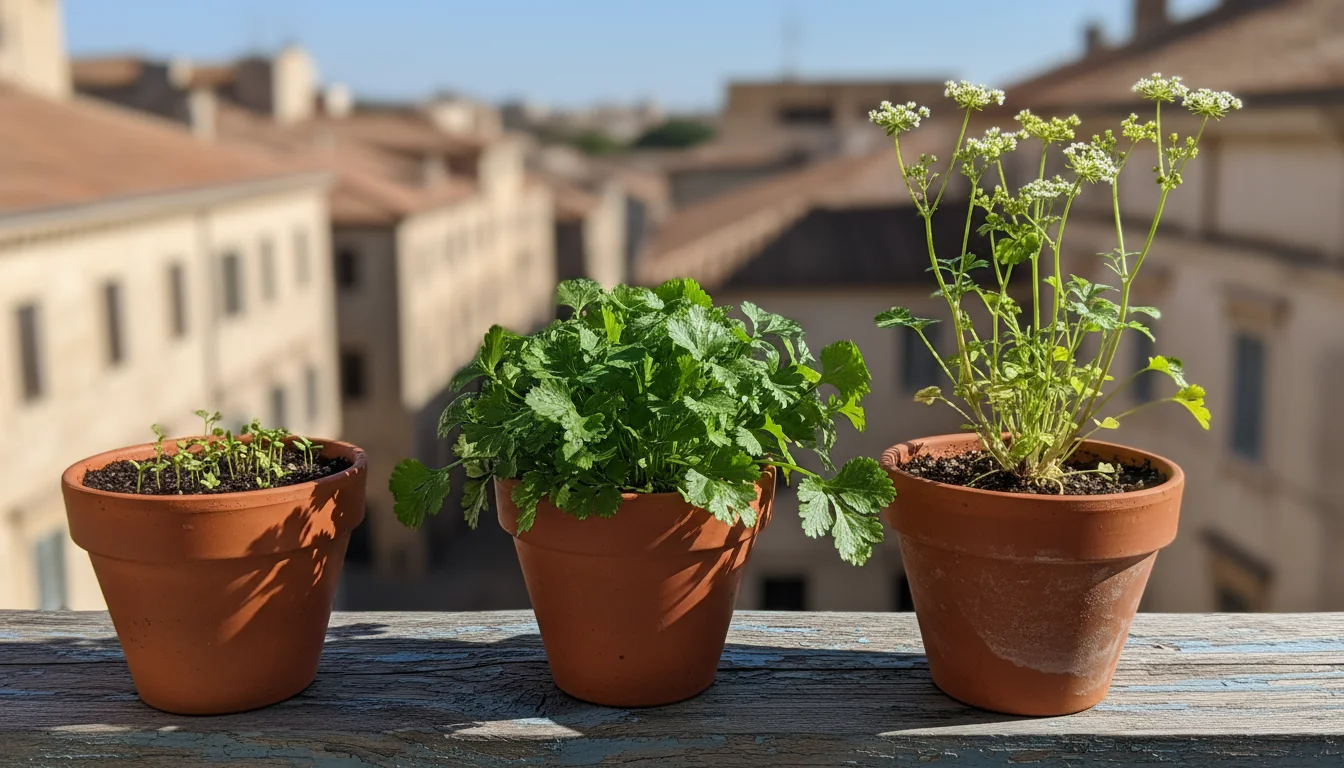
Cilantro (Coriandrum sativum)
Cilantro, or coriander, is a staple in Mexican, Indian, and Southeast Asian cuisines. It germinates quickly and offers its first tender leaves within 3-4 weeks. Cilantro prefers cooler temperatures and partial shade, especially in warmer climates, as it tends to “bolt” (go to seed) quickly in hot weather. To ensure a continuous supply, practice succession sowing, planting small batches every 2-3 weeks. This strategy provides fresh leaves while older plants go to seed, giving you coriander seeds.
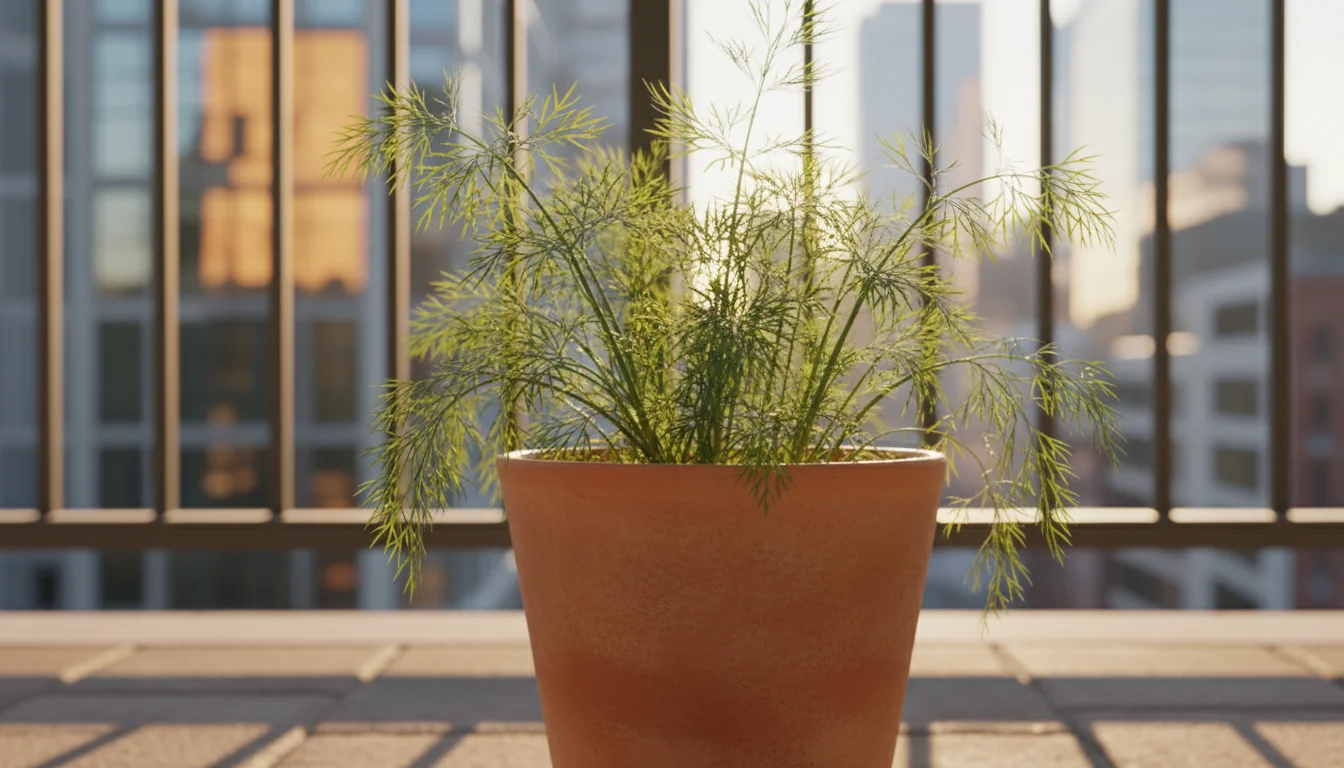
Dill (Anethum graveolens)
Dill’s feathery leaves and distinctive flavor complement fish, pickles, and potato dishes. It is another fast-growing herb, often ready for harvest in 6-8 weeks from seed. Dill prefers full sun and well-drained soil. It has a taproot, so choose a deeper pot to accommodate its growth. Like cilantro, dill can bolt in hot weather, so plant it in succession for a continuous supply of fresh foliage. Allow some plants to flower to attract beneficial insects and collect seeds.
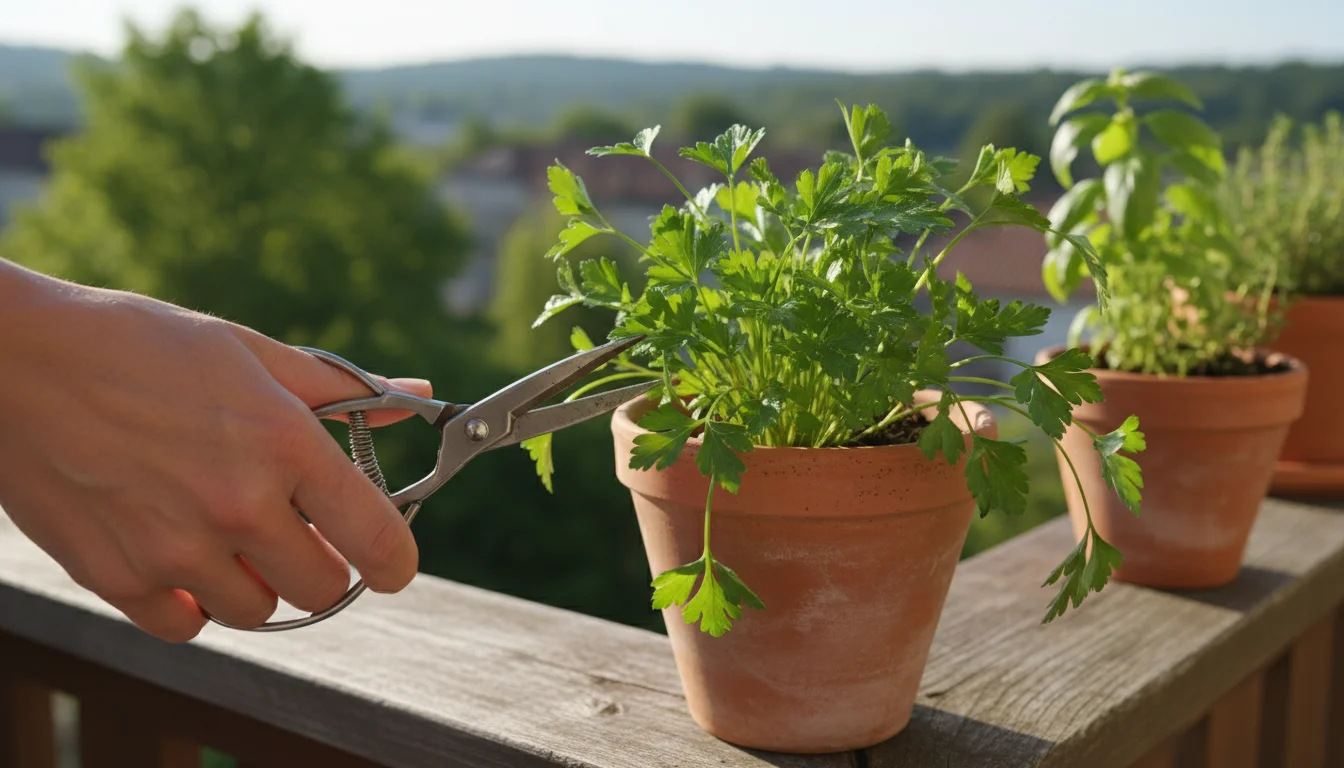
Parsley (Petroselinum crispum)
Parsley is a biennial herb, meaning it grows for two years, but you harvest its leaves in the first year. It offers a fresh, clean flavor, perfect for garnishes, sauces, and stews. While seeds can be slow to germinate, once established, parsley is a fast and prolific grower. It thrives in full sun to partial shade and moist, rich soil. Flat-leaf parsley (‘Italian’) offers a more robust flavor, while curly parsley provides an attractive garnish. Consistent harvesting encourages new growth.
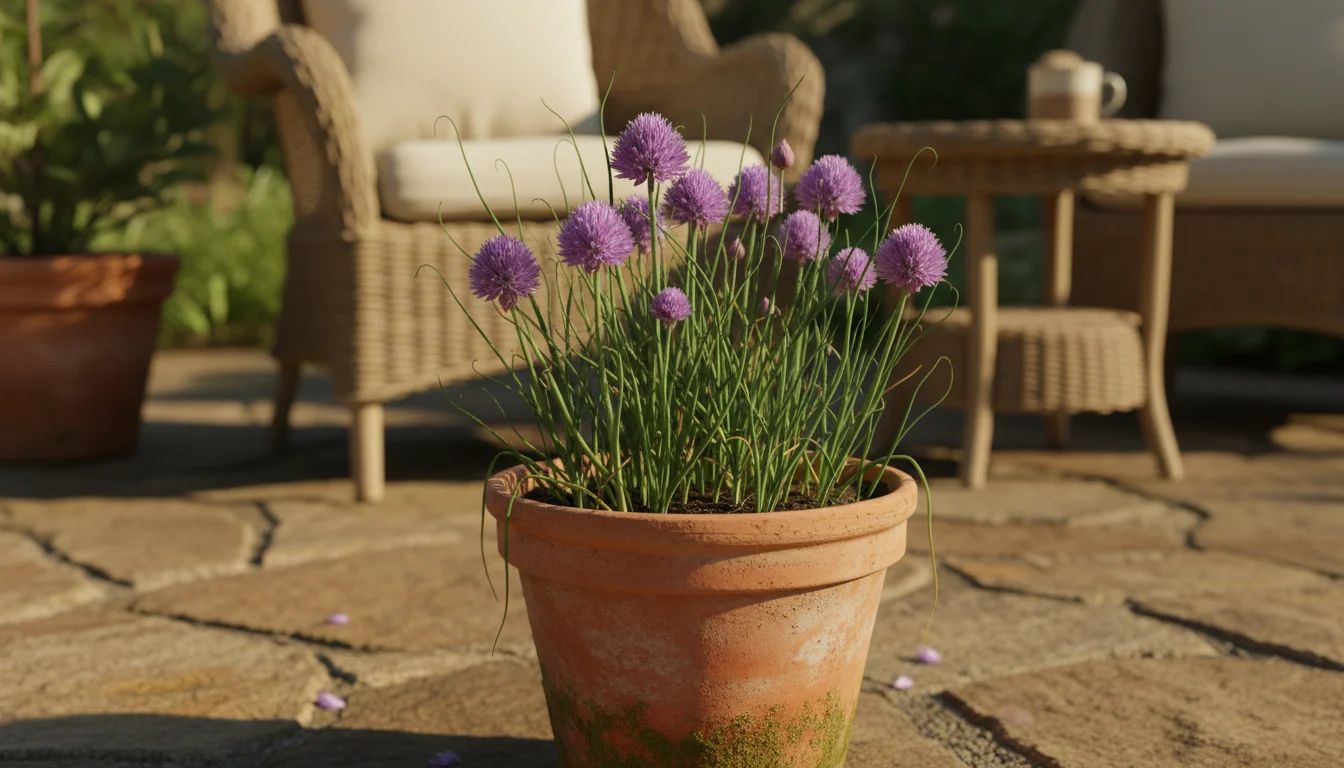
Chives (Allium schoenoprasum)
Chives are a member of the onion family, offering a delicate oniony flavor without the pungency. They are incredibly easy to grow from seed or divisions and produce quickly. Chives form clumps of slender, grass-like leaves and produce beautiful purple flowers, which are also edible. They prefer full sun to partial shade and well-drained soil. Chives are perennial, returning year after year, making them a low-maintenance staple. Snip the leaves from the base for continuous harvests.
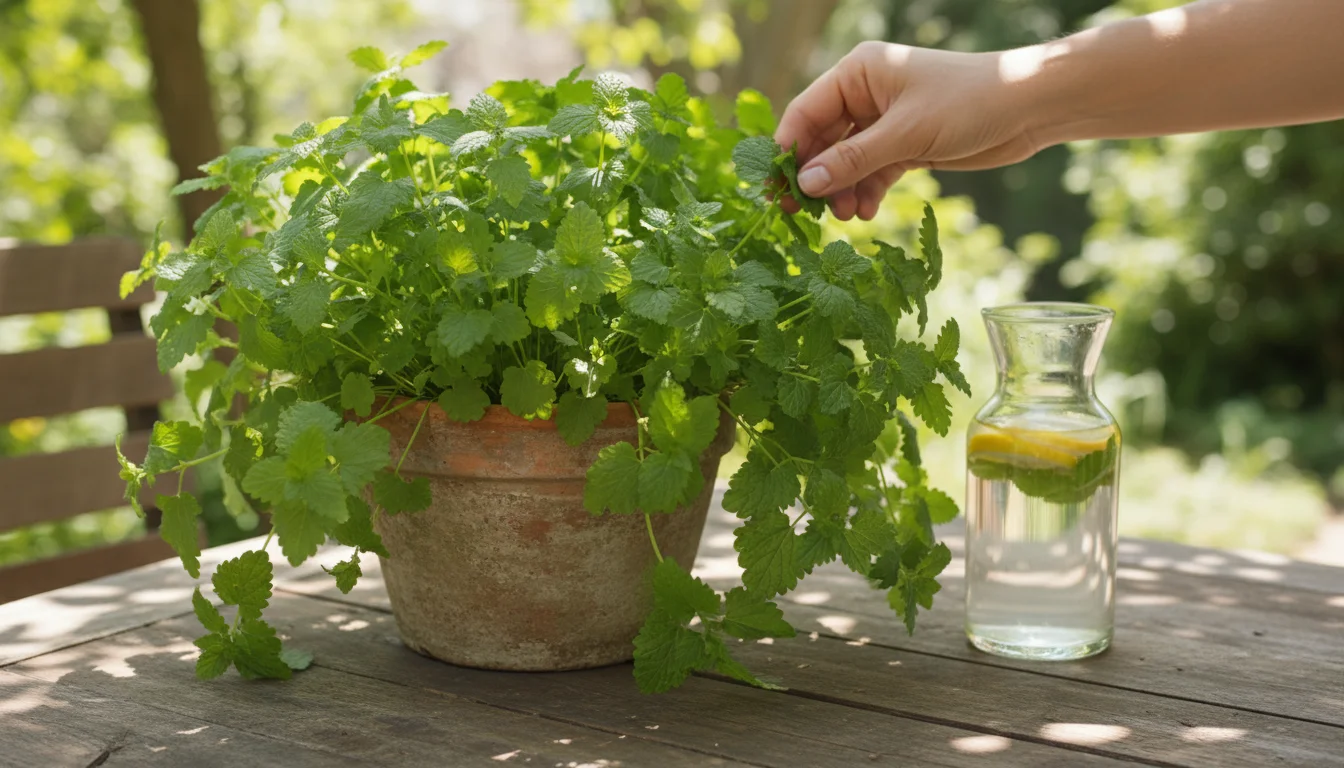
Lemon Balm (Melissa officinalis)
Lemon balm is a vigorous, fast-growing member of the mint family, offering a distinct lemony fragrance and flavor. It is fantastic for teas, infused water, and desserts. Like mint, it can spread enthusiastically, so container growing is ideal. Lemon balm tolerates partial shade but grows bushier in full sun with consistent moisture. Harvest leaves frequently to encourage new growth and prevent it from flowering too early. Its leaves are ready for harvest in just a few weeks after planting.
| Herb | Sunlight Needs | Water Needs | Container Size (Min. Diameter) | Time to First Harvest (from seed) | Growth Habit |
|---|---|---|---|---|---|
| Basil | Full Sun (6+ hours) | Consistently Moist | 8 inches | 3-4 weeks | Bushy |
| Mint | Full Sun to Partial Shade | Consistently Moist | 10 inches (to contain spread) | 2-3 weeks (from plant) | Spreading |
| Cilantro | Full Sun (cool), Partial Shade (warm) | Consistently Moist | 6-8 inches | 3-4 weeks | Upright, bushy |
| Dill | Full Sun (6+ hours) | Well-drained, Moderate | 8-10 inches (deep) | 6-8 weeks | Upright, feathery |
| Parsley | Full Sun to Partial Shade | Consistently Moist | 8 inches | 6-8 weeks (from seed) | Bushy |
| Chives | Full Sun to Partial Shade | Well-drained, Moderate | 6-8 inches | 3-4 weeks (from division) | Clumping |
| Lemon Balm | Full Sun to Partial Shade | Consistently Moist | 10 inches (to contain spread) | 3-4 weeks | Spreading, bushy |
This table offers a quick reference for matching specific fast-growing herbs to your available space and care routine, ensuring you choose the best herbs to grow for your needs.
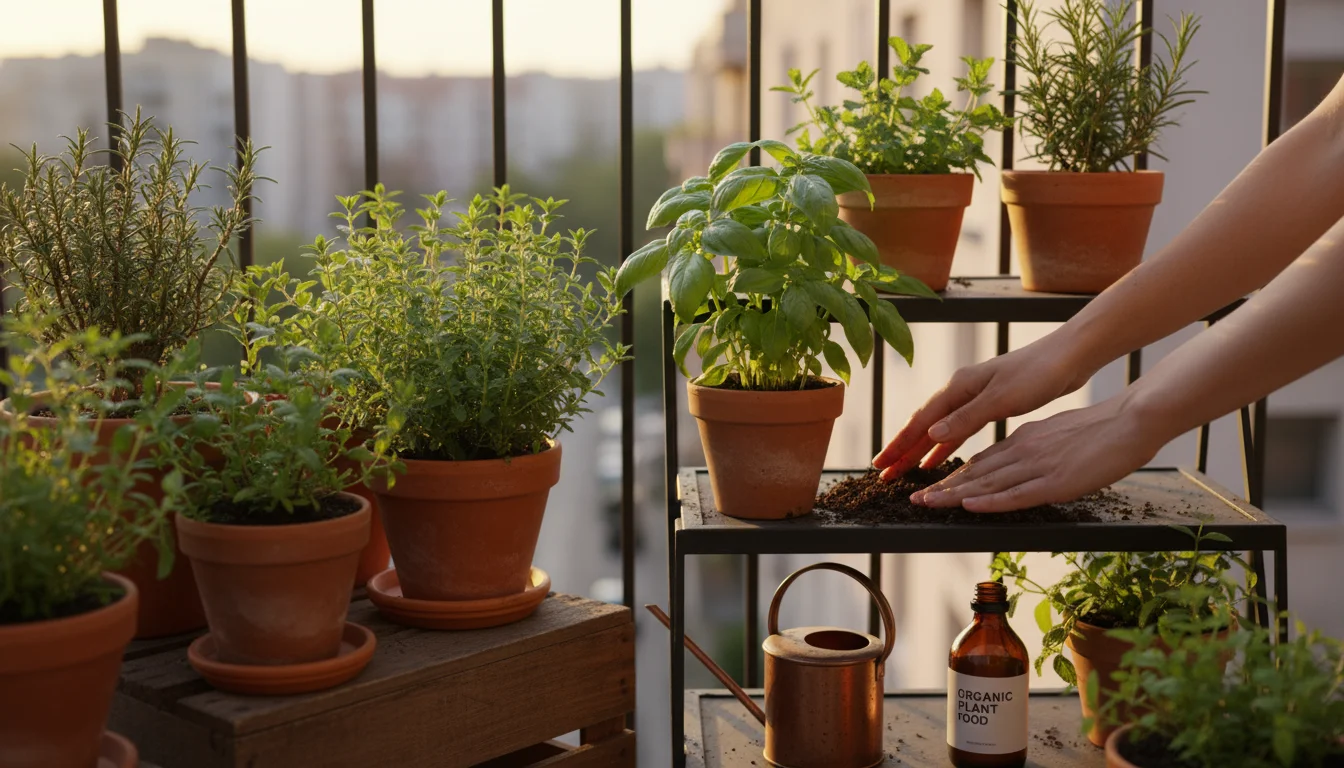
Mastering Light, Water, and Nutrient Rhythm for Herbs
Understanding the interplay of light, water, and nutrients establishes a robust growing environment for your fast-growing herbs. While specific needs vary, a general rhythm ensures consistent health and productivity. Getting this balance right is key to success in small-space gardening.
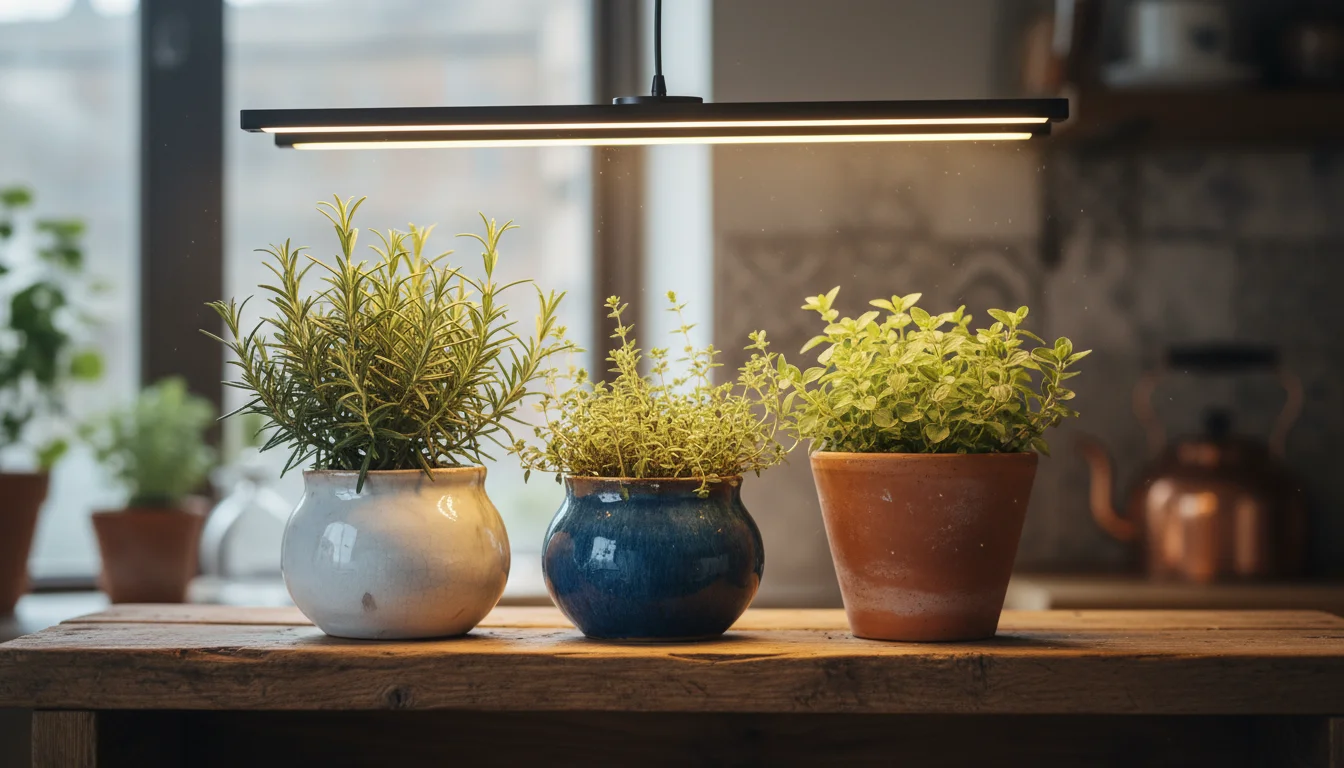
Optimizing Light Exposure
As discussed, most kitchen herbs require at least six hours of direct sunlight. If your primary spot does not provide this, you have options. Consider rotating your containers throughout the day to maximize sun exposure. For example, move a pot from a morning sun spot to an afternoon sun spot. If natural light is insufficient, especially indoors, supplemental grow lights can make a significant difference. LED grow lights are energy-efficient and effective, providing the necessary spectrum for healthy herb growth. Positioning the light 6-12 inches above the plant canopy for 12-14 hours a day mimics ideal conditions and promotes vigorous growth.
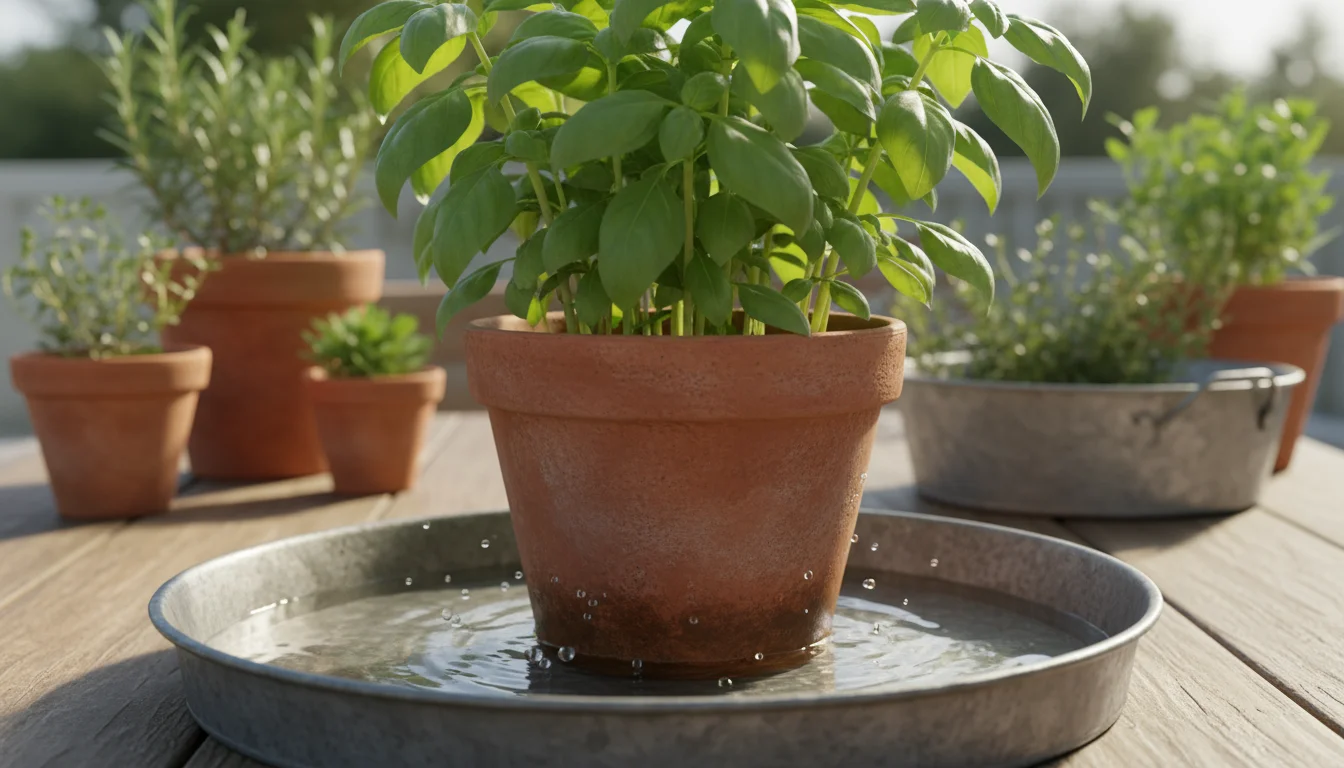
The Art of Efficient Watering
Proper watering is critical, and overwatering is a common mistake that leads to root rot. The general rule for most herbs is to water deeply when the top inch or two of soil feels dry to the touch. Stick your finger into the soil to check moisture levels before watering. When you water, do so slowly and thoroughly until water drains from the bottom of the pot. This deep watering encourages roots to grow downward, making the plant more resilient. For plants in saucers, empty any excess water within 30 minutes to prevent roots from sitting in standing water.
Another efficient watering method is bottom watering. Place your container in a tray of water and allow the soil to absorb moisture from the drainage holes upwards. This ensures the entire root ball gets saturated and prevents soil compaction from overhead watering. It is also an excellent way to rehydrate very dry potting mixes. Self-watering containers, as mentioned earlier, are fantastic for maintaining consistent moisture without daily intervention, especially for thirsty herbs like basil and mint.
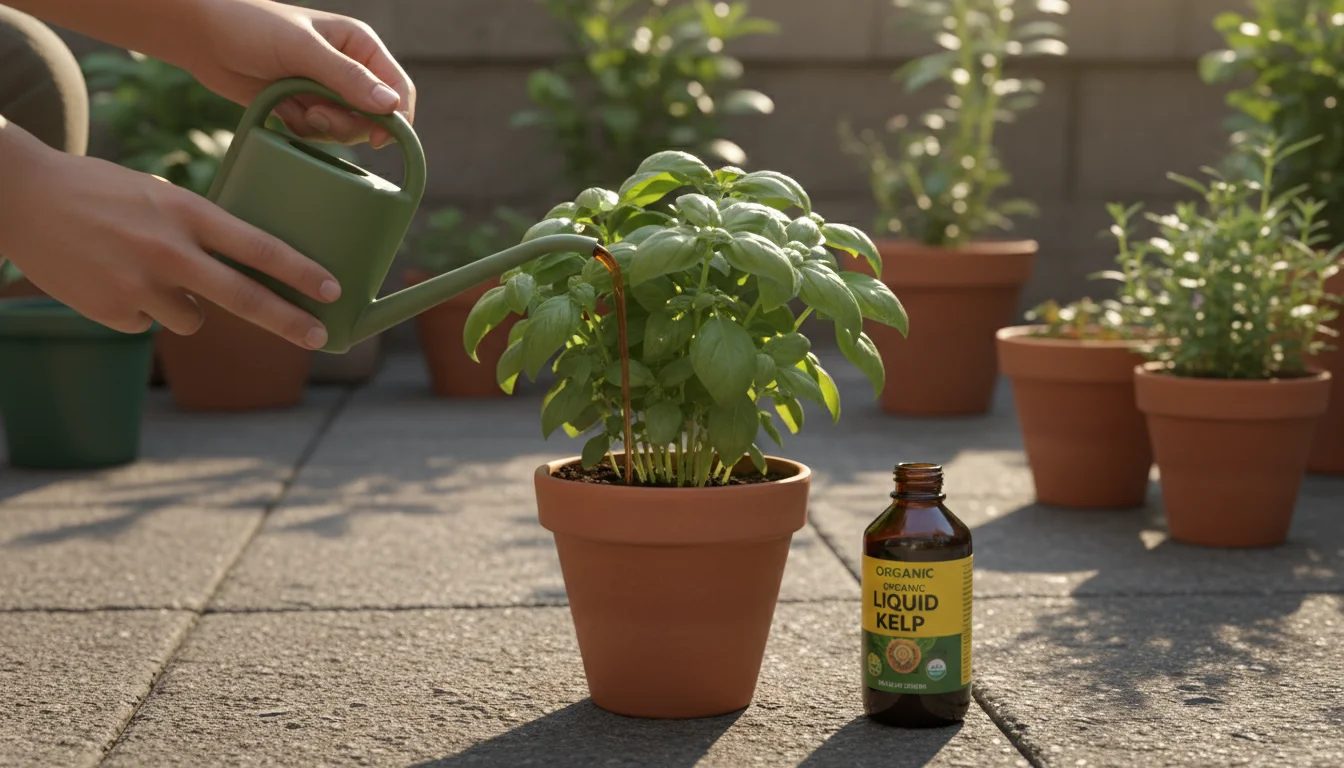
Nourishing with Organic Fertilizers
Fast-growing herbs in containers deplete soil nutrients more quickly than in-ground plants because they have limited soil volume. Regular feeding with organic fertilizers replenishes these nutrients, supporting continuous growth and maximizing yields. Start with a rich potting mix that includes compost. Then, every 2-4 weeks during the active growing season, provide a balanced liquid organic fertilizer. Look for products with an NPK ratio around 5-1-1 or 2-3-1, indicating a higher nitrogen content for leafy growth. Examples include diluted fish emulsion, kelp meal, or a balanced organic vegetable fertilizer. Always follow the manufacturer’s instructions for dilution and application rates. Over-fertilizing can burn roots and harm your plants.
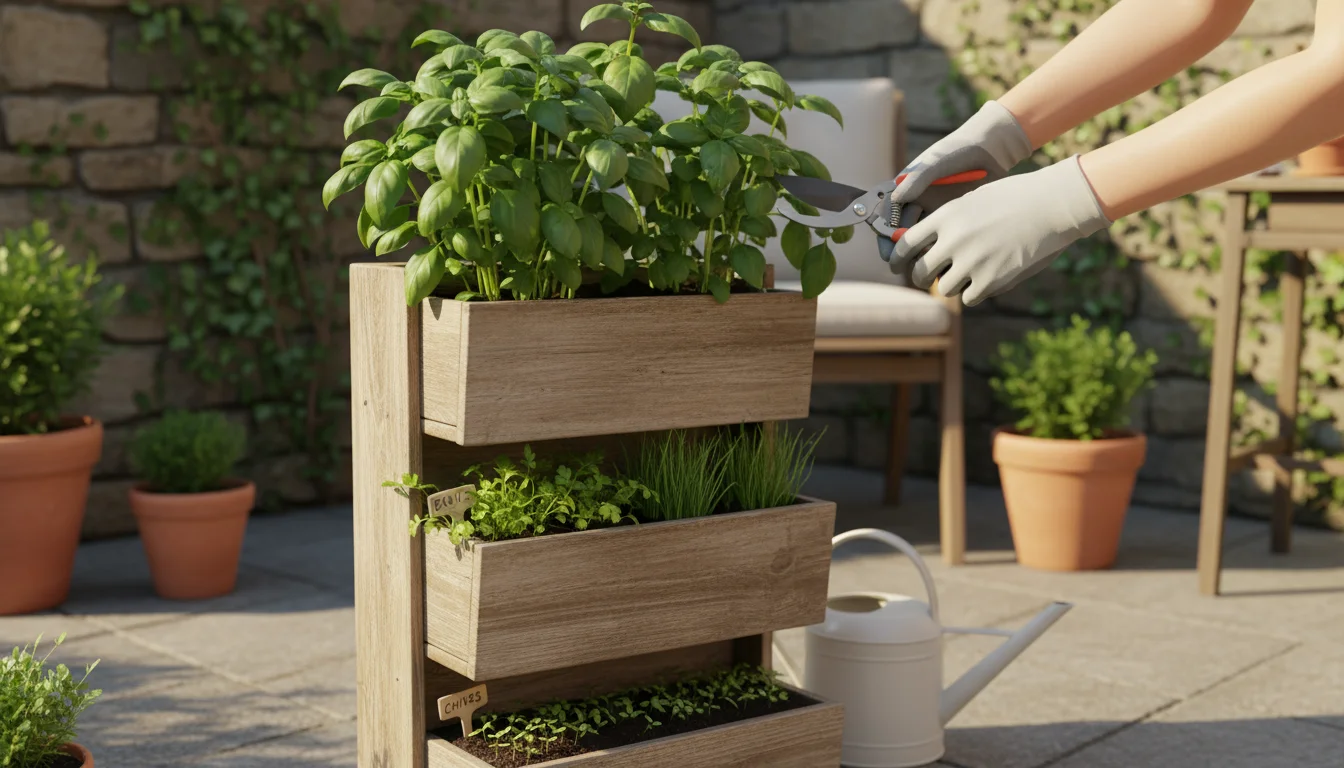
Succession Sowing and Smart Spacing for Continuous Harvests
To ensure a continuous supply of fresh fast-growing herbs, you need to employ smart strategies for planting and spacing. Succession sowing prevents gluts and gaps in your harvest, while proper spacing ensures each plant has the room it needs to thrive and produce abundantly.
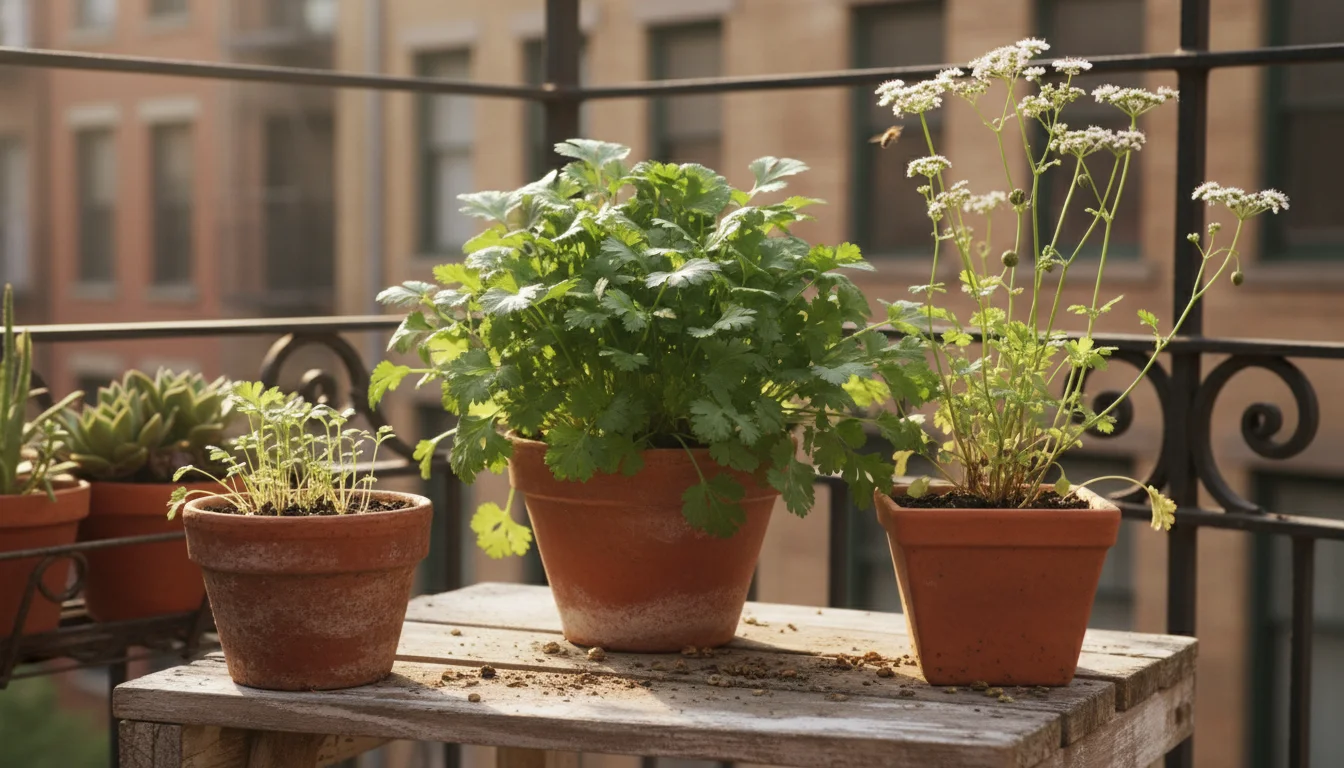
Understanding Succession Sowing
Succession sowing means planting small batches of seeds every couple of weeks, rather than planting an entire packet all at once. This strategy staggers your harvests, so you always have young, tender plants ready for picking as older plants reach maturity or begin to bolt. It is particularly effective for fast-growing herbs like cilantro, dill, and basil, which can quickly produce a large crop, then slow down or go to seed. For example, plant a small pot of cilantro every two weeks. When the first batch starts to bolt, your next batch will be ready for harvest. This provides a steady supply of fresh kitchen herbs throughout the growing season, maximizing your container space and effort.
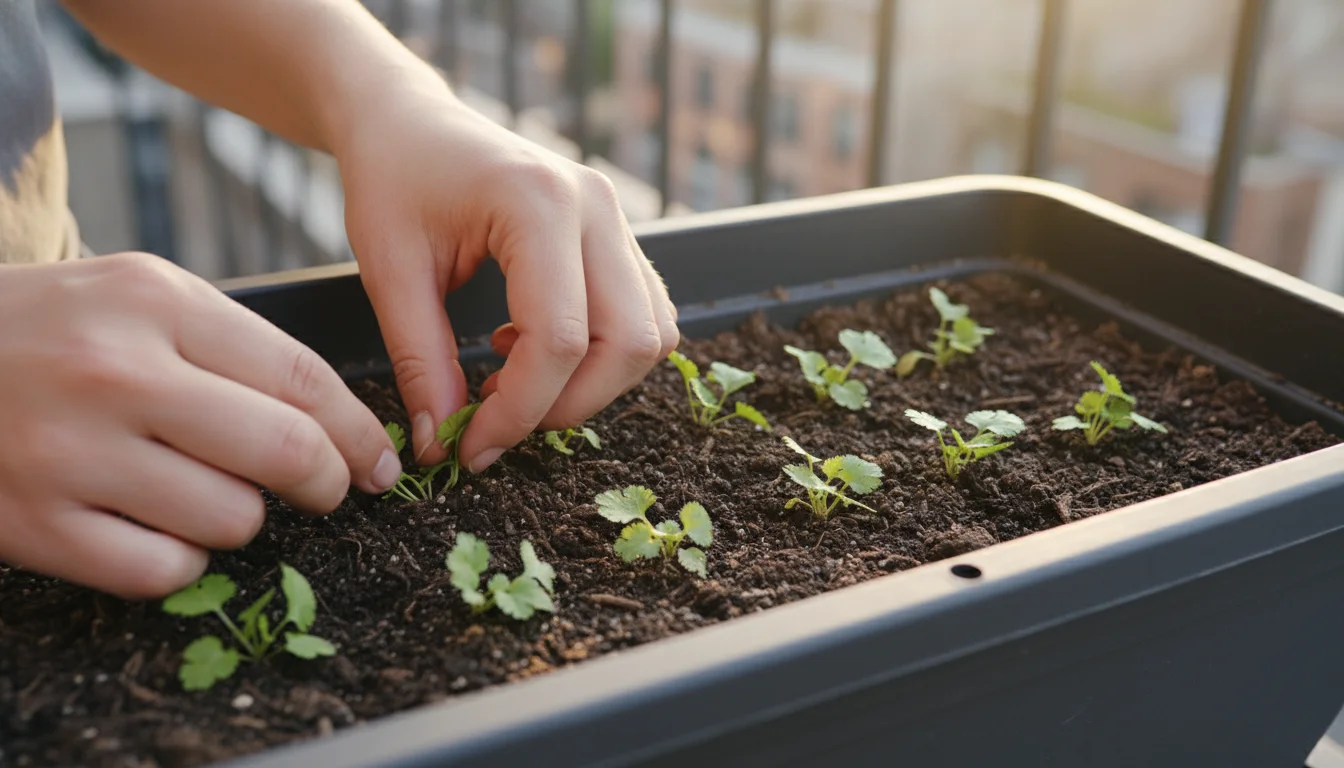
Optimal Spacing for Herb Health
Proper spacing ensures adequate air circulation, light penetration, and nutrient availability for each plant. Overcrowding leads to competition for resources, reduced yields, and increased susceptibility to diseases. While specific spacing requirements vary by herb, a general guideline is to give each plant enough room to reach its mature size without touching its neighbors.
- Basil: Plant individual basil plants 6-8 inches apart in a container.
- Mint and Lemon Balm: As vigorous spreaders, plant one mint or lemon balm plant per 8-10 inch pot to prevent them from choking out other plants.
- Cilantro and Dill: Sow seeds thinly, then thin seedlings to 4-6 inches apart. You can sow denser and harvest the thinnings as baby greens.
- Parsley: Space parsley plants 6-8 inches apart.
- Chives: Plant chive clumps 6-8 inches apart.
When planting, consider the mature size of the herb, not just its initial seedling size. Good airflow around plants is a key component of preventing fungal diseases, especially in humid conditions or small, enclosed spaces like balconies.
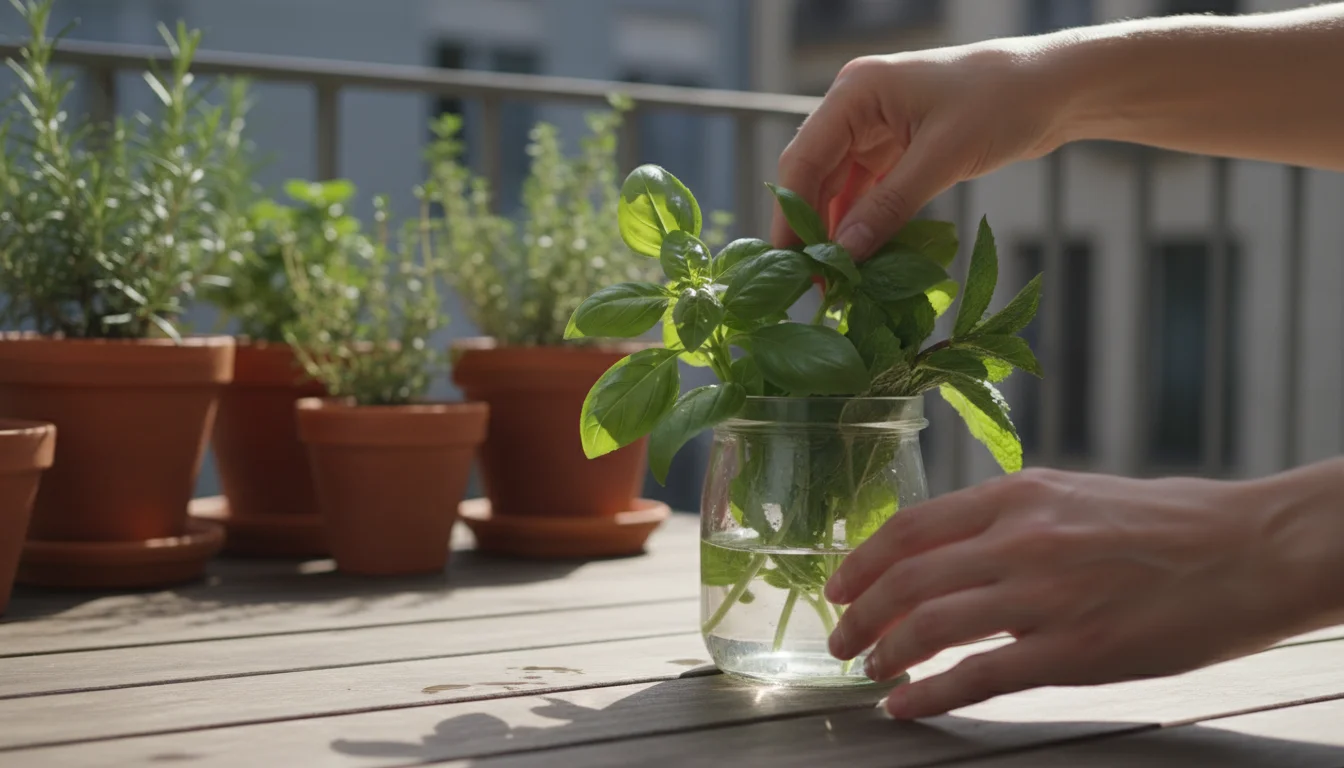
Harvesting, Pruning, and Storing Your Kitchen Herbs
Knowing how and when to harvest your fast-growing herbs ensures you maximize their flavor and encourage continuous production. Proper pruning techniques extend the life of your plants, and smart storage methods preserve their freshness, so you get the most out of your kitchen herbs.
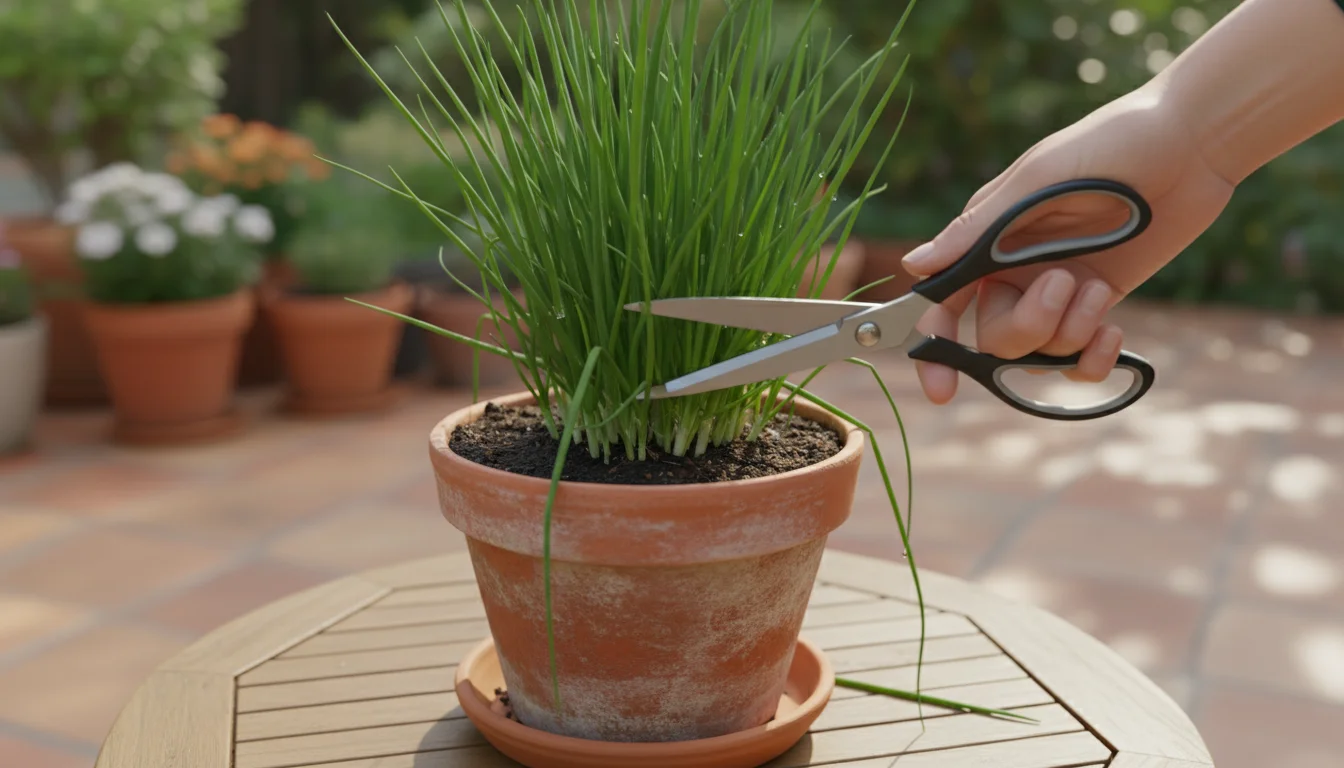
The Art of Cut-and-Come-Again Harvesting
Many fast-growing herbs benefit from a “cut-and-come-again” harvesting method. This technique involves taking only what you need, rather than harvesting the entire plant. By doing so, you stimulate new growth, ensuring a continuous supply of fresh leaves. For herbs like basil, mint, and lemon balm, pinch off individual leaves or snip stems above a leaf node. This encourages the plant to branch out, becoming bushier and more productive. For chives, snip the outer leaves near the base of the plant. For cilantro and parsley, harvest the outer leaves first, leaving the inner growth to mature. Regular, light harvesting is a form of pruning that keeps your herbs vibrant and flavorful.
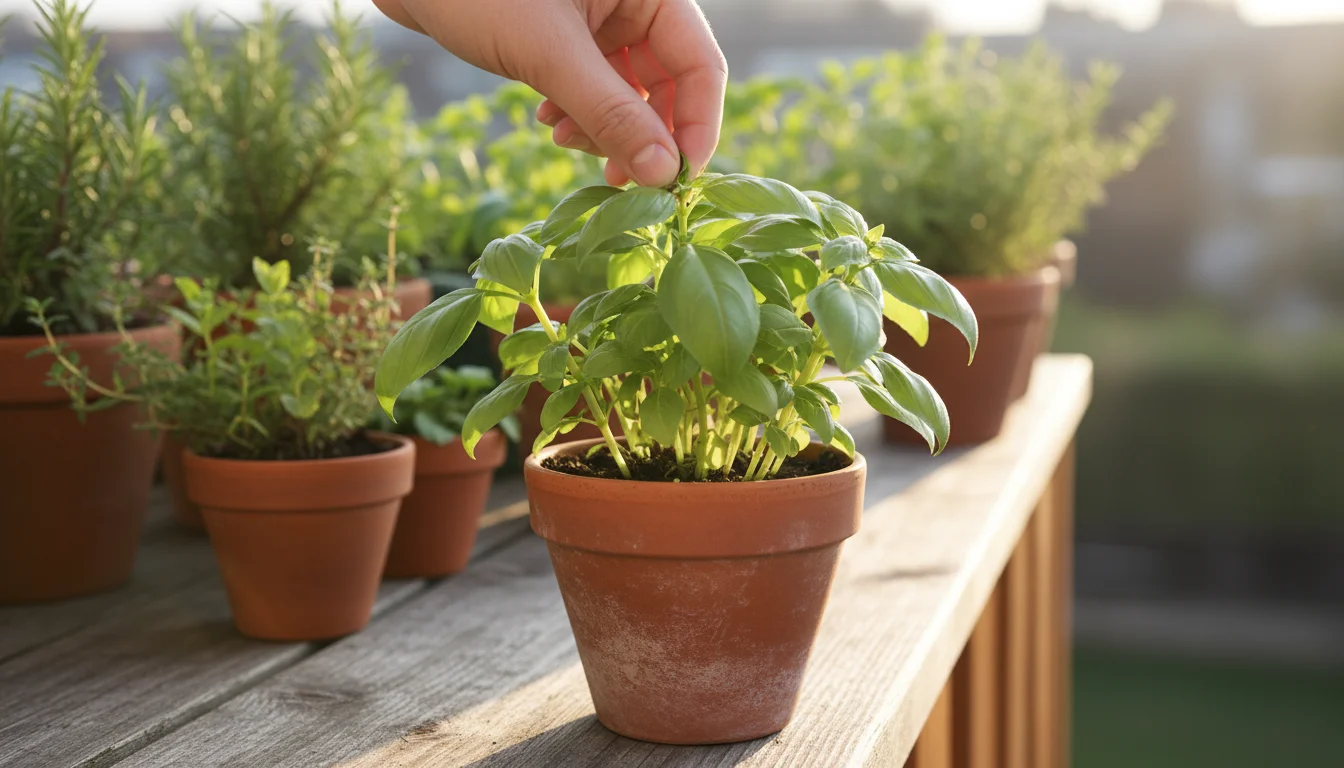
Pruning for Yield and Health
Beyond daily harvesting, occasional pruning enhances plant health and yield. For basil, once the plant grows to 6-8 inches tall, pinch off the central growing stem just above a set of leaves. This prevents the plant from bolting prematurely and encourages side shoots, leading to a bushier, more productive plant. When basil or dill starts to form flower buds, pinch them off immediately if you want to prolong leaf production. Allowing plants to flower directs energy into seed production, often reducing leaf flavor and yield. For mint and lemon balm, which can become leggy, cut back stems by about one-third every few weeks to promote fresh, tender growth.
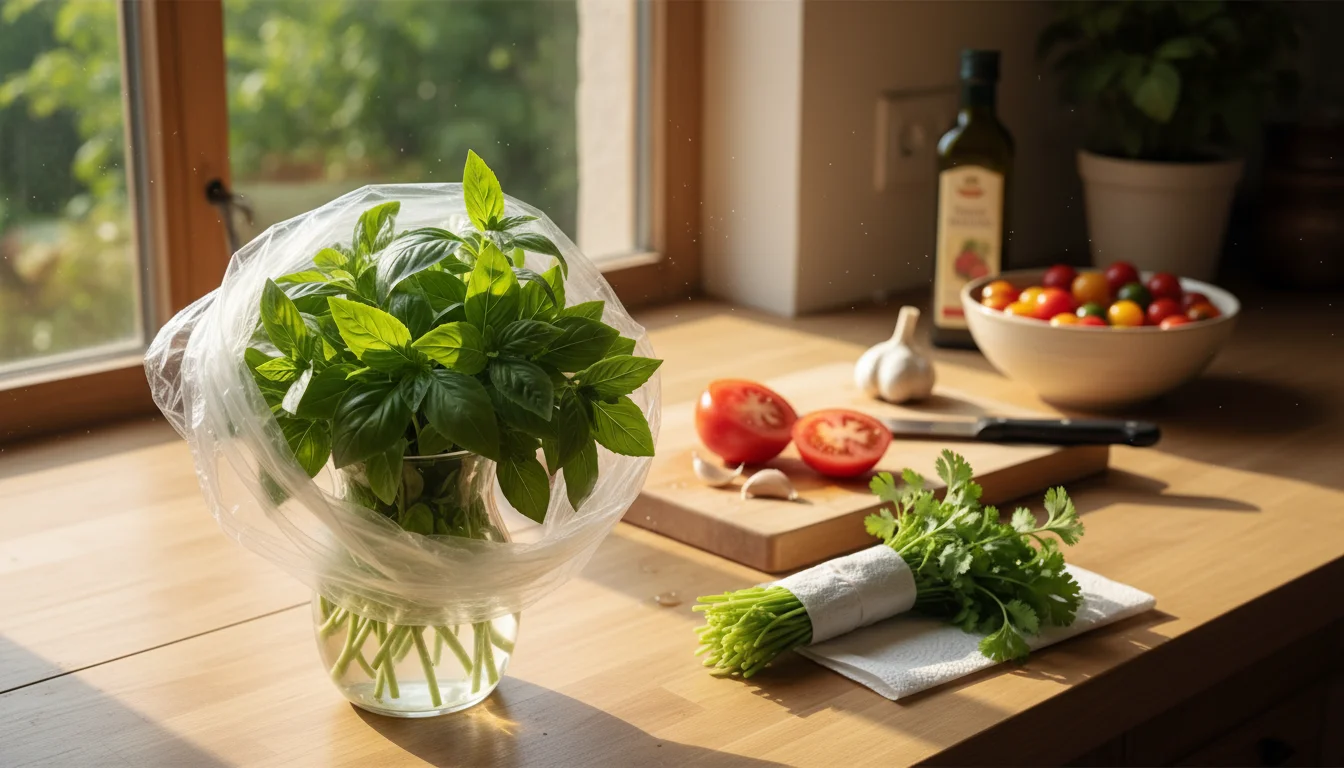
Extending Freshness: Storage Tips
Fresh herbs are best used immediately, but you can extend their freshness with proper storage:
- Basil: Treat basil like a cut flower. Place the stems in a glass of water on your kitchen counter, away from direct sunlight. Cover loosely with a plastic bag. Change the water daily. Avoid refrigerating basil, as it turns black and loses flavor. It can last up to a week this way.
- Cilantro, Parsley, Dill, Chives: Rinse the herbs, pat them dry, and wrap them loosely in a damp paper towel. Place this bundle in a plastic bag or an airtight container in the refrigerator’s crisper drawer. They can stay fresh for 1-2 weeks. For chives, you can also stand them upright in a glass of water in the fridge, covered.
- Mint and Lemon Balm: Store similarly to cilantro and parsley, wrapped in a damp paper towel in a bag in the refrigerator.
For longer-term storage, consider freezing or drying. Freezing herbs in olive oil ice cubes (for savory herbs) or drying them are excellent ways to preserve their flavor for months.
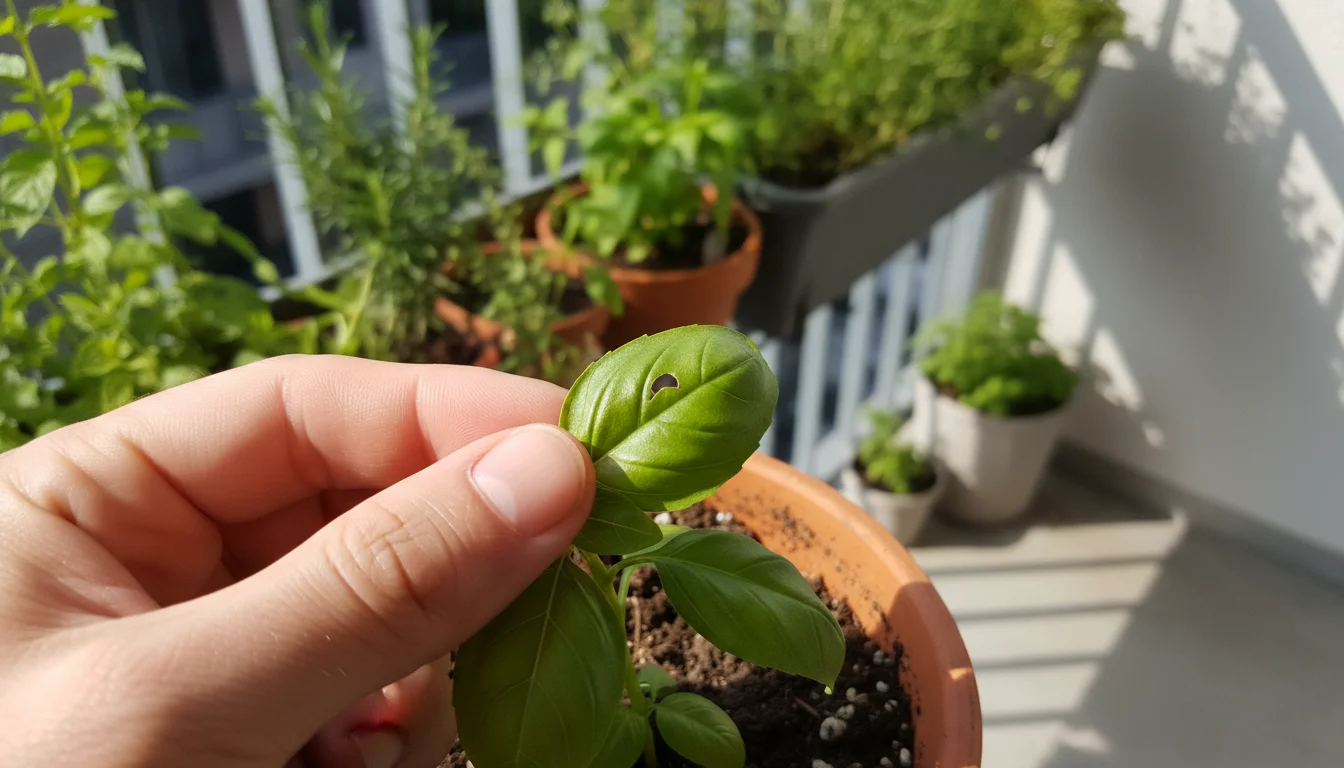
Troubleshooting Common Herb Issues and Pests
Even the most attentive gardeners encounter occasional challenges. Recognizing common issues and knowing how to address them quickly helps keep your fast-growing herbs healthy and productive. Integrated Pest Management (IPM) principles guide us toward prevention and least-toxic solutions.
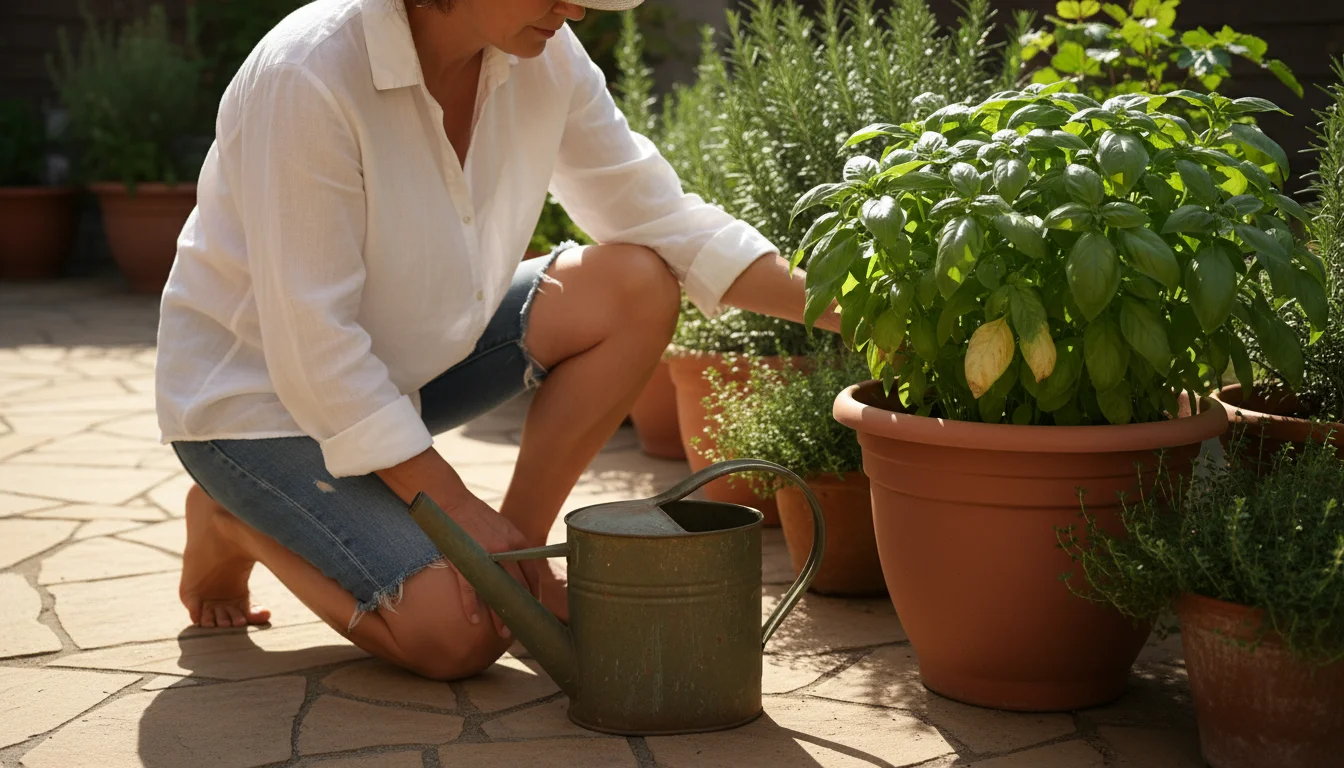
Recognizing and Preventing Problems
Many herb problems stem from improper environmental conditions. Yellowing leaves often indicate overwatering or nutrient deficiency. Drooping leaves might mean underwatering or heat stress. Brown, crispy leaf edges suggest underwatering or too much sun for sensitive herbs. Prevention is always the best defense:
- Right Plant, Right Place: Ensure your herbs receive appropriate sunlight and are in well-draining pots.
- Good Air Circulation: Space plants adequately to prevent fungal issues.
- Proper Watering: Water deeply when the topsoil is dry, avoiding extremes.
- Healthy Soil: Use a high-quality potting mix and replenish nutrients regularly.
Regularly inspect your plants. A quick visual check during daily watering can catch problems early, making them much easier to manage.
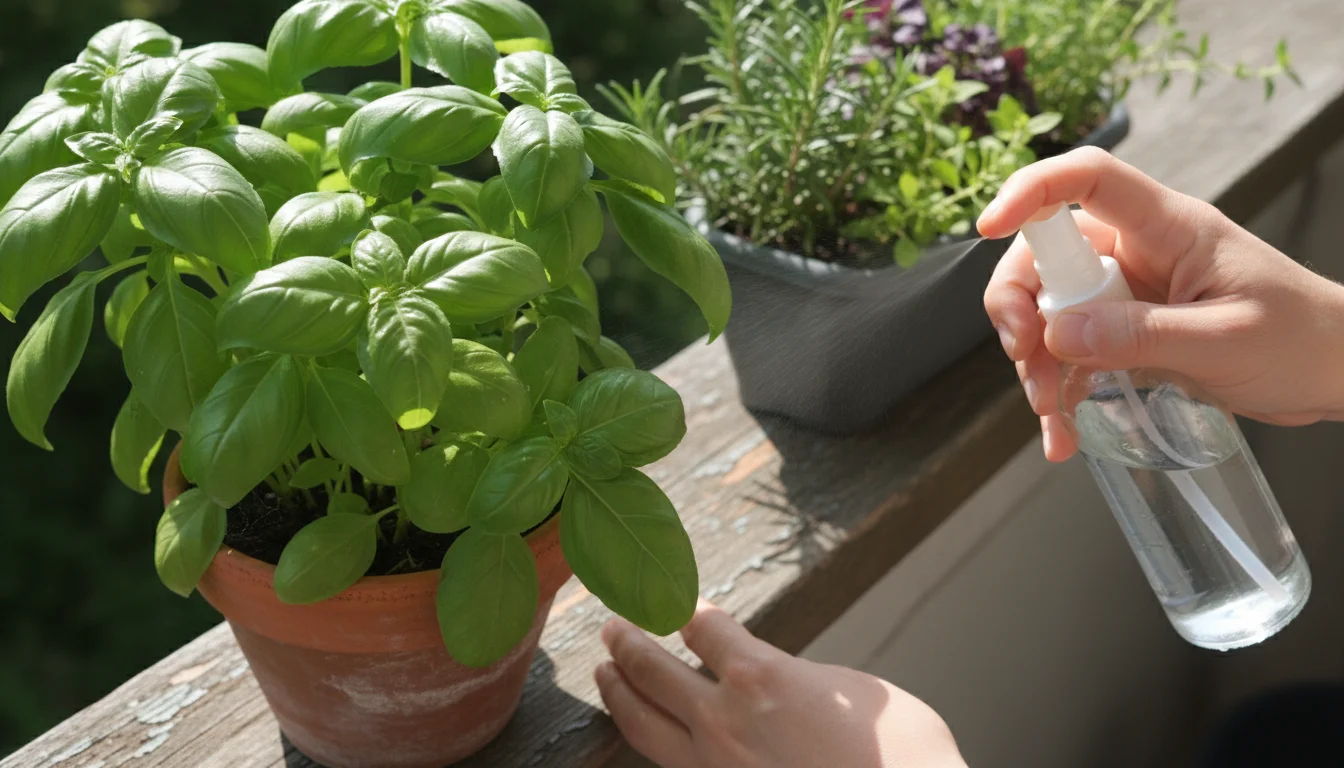
Common Herb Pests and Least-Toxic Controls
Even in small spaces, pests can find their way to your delicious kitchen herbs. Here are some common culprits and how to manage them:
- Aphids: These tiny, soft-bodied insects cluster on new growth and the undersides of leaves, sucking plant sap.
- Control: Spray them off with a strong jet of water. For persistent infestations, use insecticidal soap, ensuring complete coverage of the affected areas.
- Spider Mites: These microscopic pests create fine webbing on plants and cause stippling (tiny dots) on leaves. They thrive in hot, dry conditions.
- Control: Increase humidity around plants. Spray with insecticidal soap or neem oil, focusing on the undersides of leaves.
- Whiteflies: Small, white, winged insects that fly up when disturbed from the undersides of leaves. They also suck plant sap.
- Control: Use yellow sticky traps to catch adults. Spray with insecticidal soap or neem oil.
Always identify the pest accurately before applying treatments. Start with the least toxic method first. Encourage beneficial insects like ladybugs and lacewings by avoiding broad-spectrum pesticides, or introduce them if problems persist. You can learn more about identifying and managing common garden pests through resources like the UC IPM (University of California Integrated Pest Management) program.
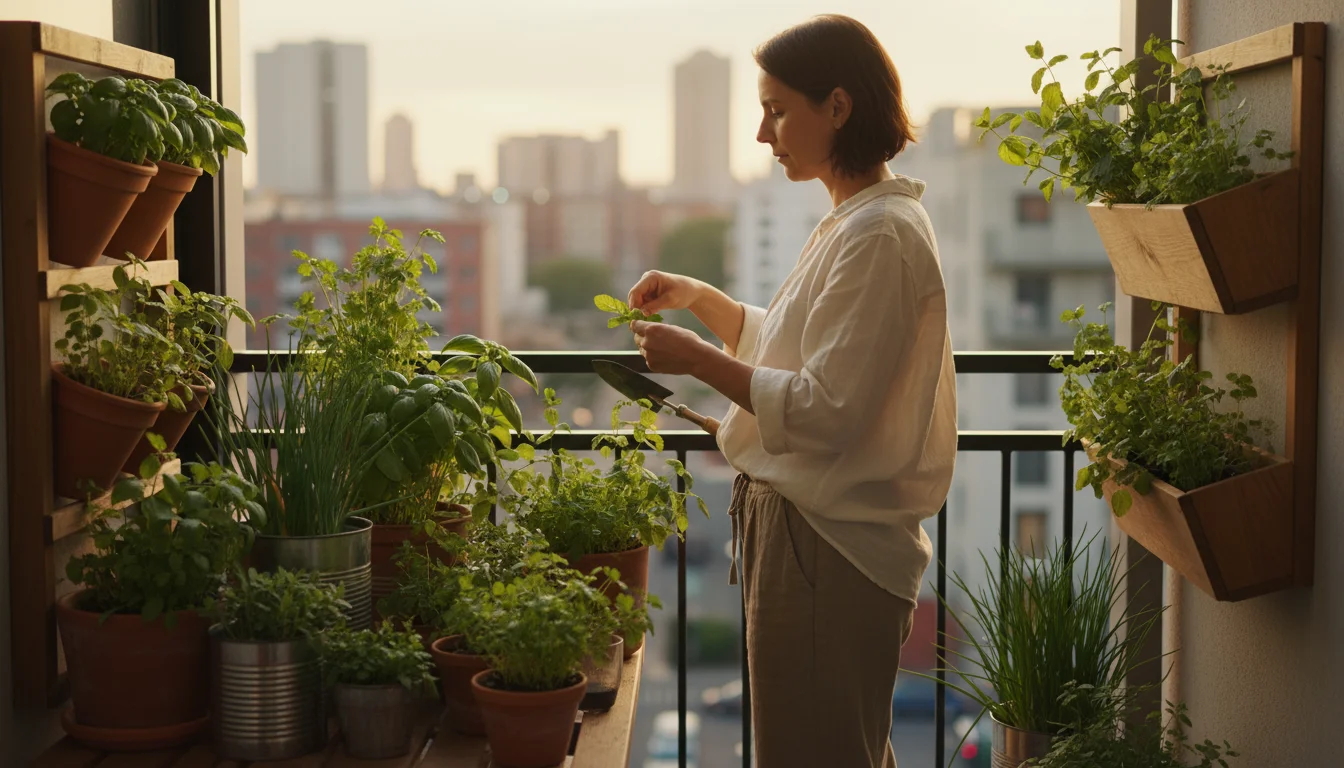
Frequently Asked Questions
Are fast-growing herbs suitable for beginners?
Absolutely. Fast-growing herbs like basil, mint, and cilantro are ideal for beginners because they germinate quickly and show noticeable growth within weeks. This rapid progress provides immediate gratification and builds confidence, making them some of the best herbs to grow when you are starting your gardening journey. They adapt well to containers and generally have straightforward care requirements.
Can I grow different kitchen herbs in the same container?
Yes, you can, but with careful consideration. Pair herbs with similar light, water, and nutrient requirements. For example, basil, parsley, and chives often grow well together. Avoid planting vigorous, spreading herbs like mint or lemon balm with other herbs in the same pot, as they quickly outcompete their neighbors for resources. Dedicate a separate container for these enthusiastic growers to ensure their success and prevent them from stifling other plants.
How much light do fast-growing herbs need indoors?
Most fast-growing herbs, even indoors, thrive with at least 6 hours of direct sunlight. If you cannot provide this naturally through a south-facing window, supplemental lighting is beneficial. A simple LED grow light placed 6-12 inches above your plants for 12-14 hours daily will provide the necessary light spectrum for healthy, productive growth. Without sufficient light, your herbs will become leggy and produce fewer leaves.
My herbs are getting leggy. What does this mean, and how can I fix it?
Leggy herbs have long, stretched-out stems with sparse leaves. This usually indicates insufficient light. The plant stretches to reach a light source. To fix this, provide more light, either by moving the plant to a brighter location or adding supplemental grow lights. You can also prune back the leggy growth to encourage bushier development. Cut stems back to a leaf node, and new growth will emerge.
When should I start fertilizing my fast-growing herbs?
If you use a high-quality potting mix that contains compost or slow-release nutrients, your herbs may not need fertilizer for the first 4-6 weeks. After that, begin a routine of applying a balanced liquid organic fertilizer every 2-4 weeks during their active growing season. Always follow the product’s instructions for dilution. Over-fertilizing can harm your plants, so consistency and moderation are key.
You now possess the knowledge and practical steps to cultivate a thriving herb garden, even in the smallest of spaces. From selecting the perfect pot to mastering the rhythm of light, water, and nutrients, you are well-equipped to grow the best fast-growing herbs for your kitchen. Embrace these low-maintenance techniques, and soon you will enjoy a constant supply of fresh, flavorful kitchen herbs, ready to elevate every meal. Happy gardening!
For additional research-based guidance on edible gardening, visit
University of Illinois Extension — Gardening,
University of Minnesota Extension,
Royal Horticultural Society (RHS),
National Garden Association, and
Purdue University Extension’s guide on container gardening.
Disclaimer: This article provides general information and guidance. Always adapt advice to your specific local conditions and consult local agricultural extension services for tailored recommendations.
